Southern Africa 2004 - South Africa
Overall, I spent about one week in South Africa before and after the safari trip to Botswana, Namibia and Zimbabwe. Four days in Johannesburg and three days in Pretoria. The first nights I spent at the Emerald Guest House, situated just a few km from the airport in Johannesburg. From this nice guest house, I made several short daytrips to various location in Joburg and nearby. I hired a guide (Ken), who one day took me to Soweto, and another day showed me the Sterkfontein Caves. Returning from the safari, I spent three days at the Zambezi Lodge in Pretoria. The managers at Zambezi Lodge charged me 2 ZAR per km to drive me around. They drove me to Pilanesberg National Park, showed me downtown Pretoria, and a Lion Park just north of Johannesburg. The old couple were very nice and helpful. They kept a fully loaded revolver beneath the seat in case of robbery!
South Africa, with its special history, is of course a very interesting country. My general impression, however, was mixed, due to racial problems and a rather tense atmosphere. Ten years after the end of the Apartheid era, white people fence themselves in behind barbed and electrified wire. Crime is everywhere, corruption thrive, HIV/aids is on the rise and the unemployment level is said to be somewhere around 30%. The government claim that the economy is growing, but, in my opinion, this country is going to face serious obstacles in the years to come. Nature-wise, this is probably one of the best destiantions in the world. As long as you take your precautions, South Africa is a great place to visit.
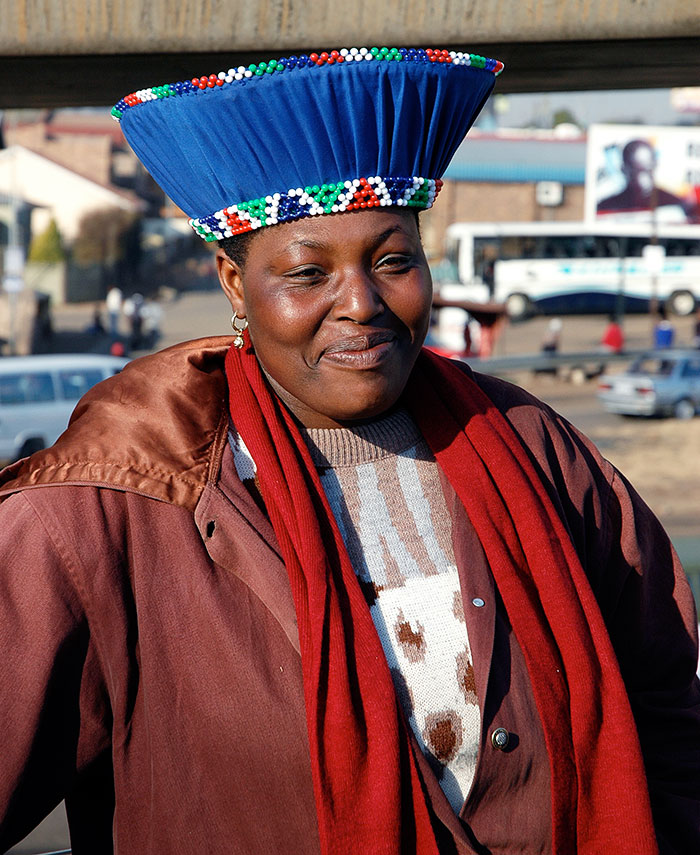
Soweto woman
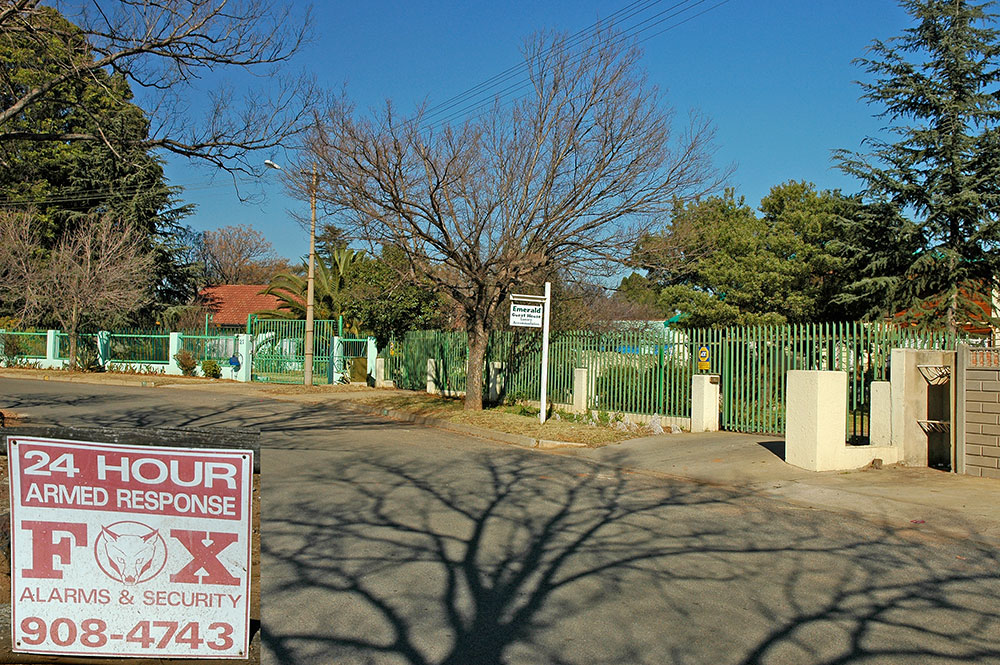
Fenced and with 24 h armed response. The Emerald Guest House is situated close to the O.R. Tambo International Airport. Recommended and a good place to spend a few days in Johannesburg
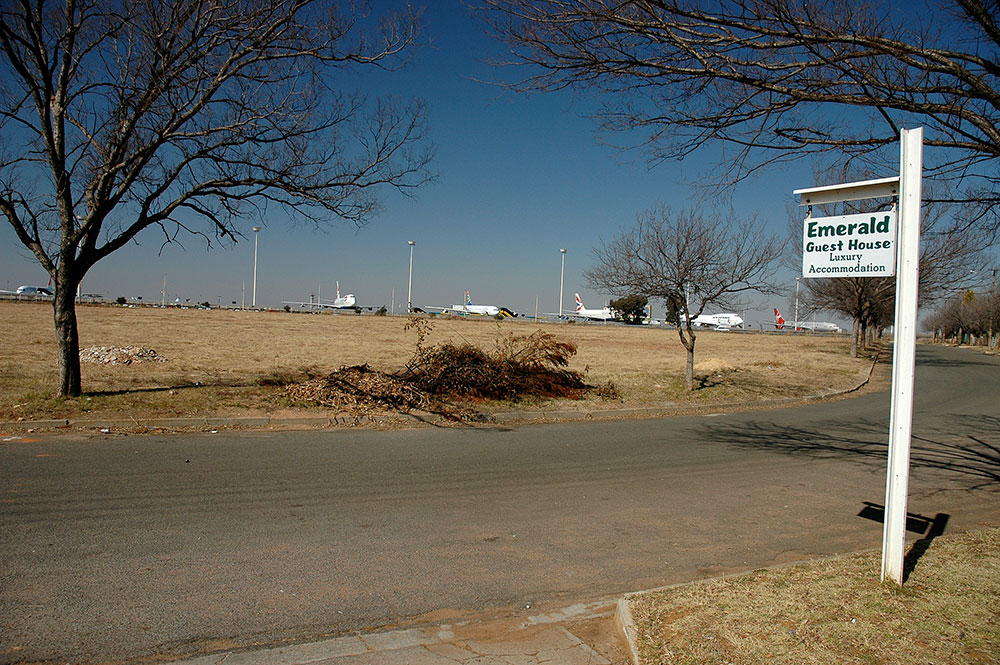
View toward the airport. The manager at Emerald Guest House helped me repair my ripped safari vest after I got robbed in Joburg. A big thank to them!
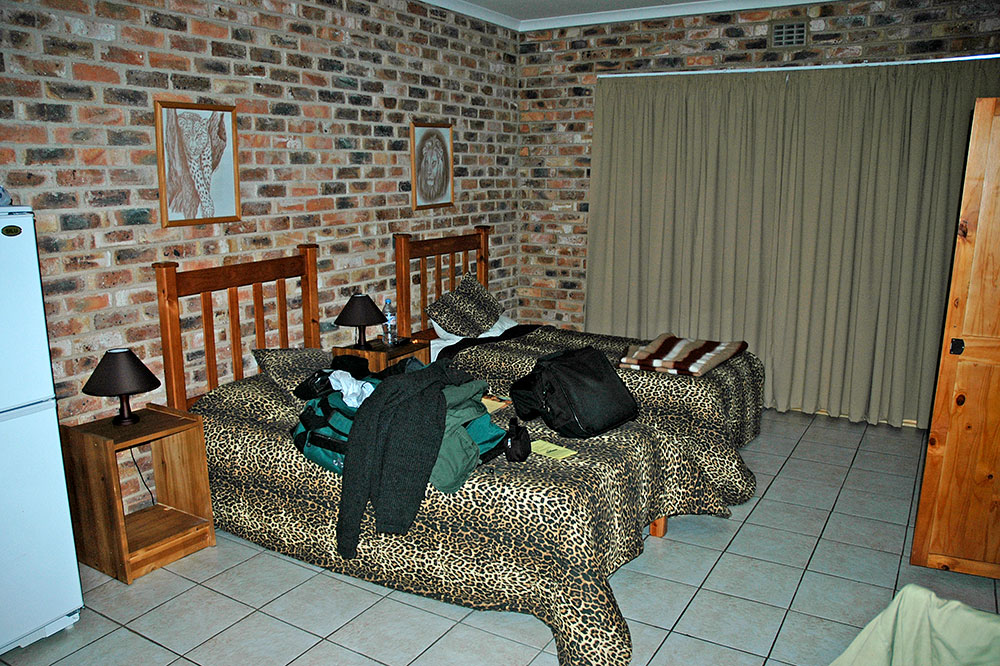
Emerald Guest House room with leopard print bed blanket!
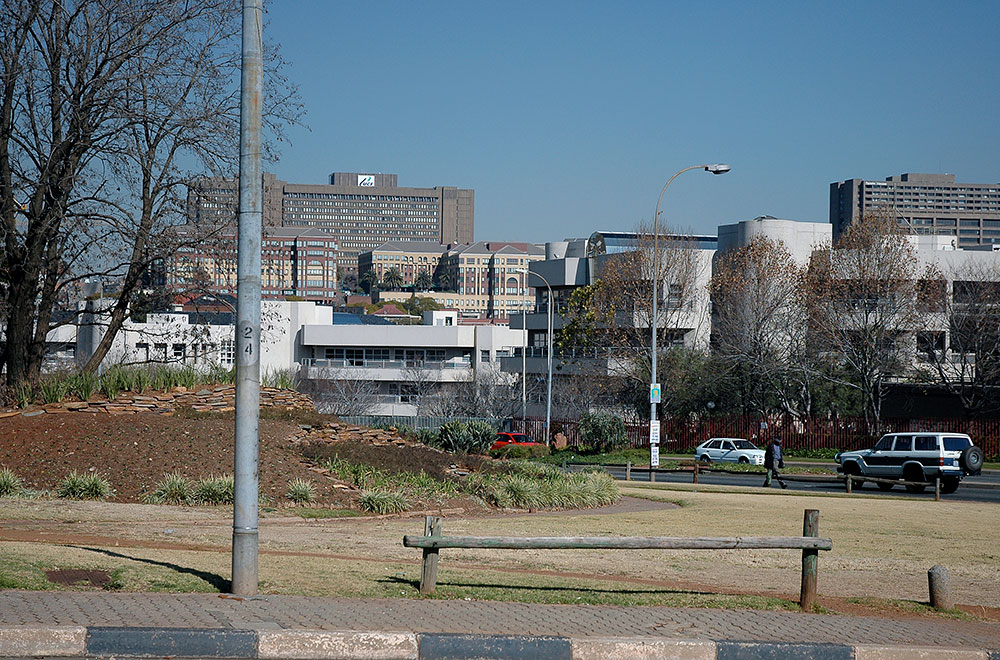
Johannesburg
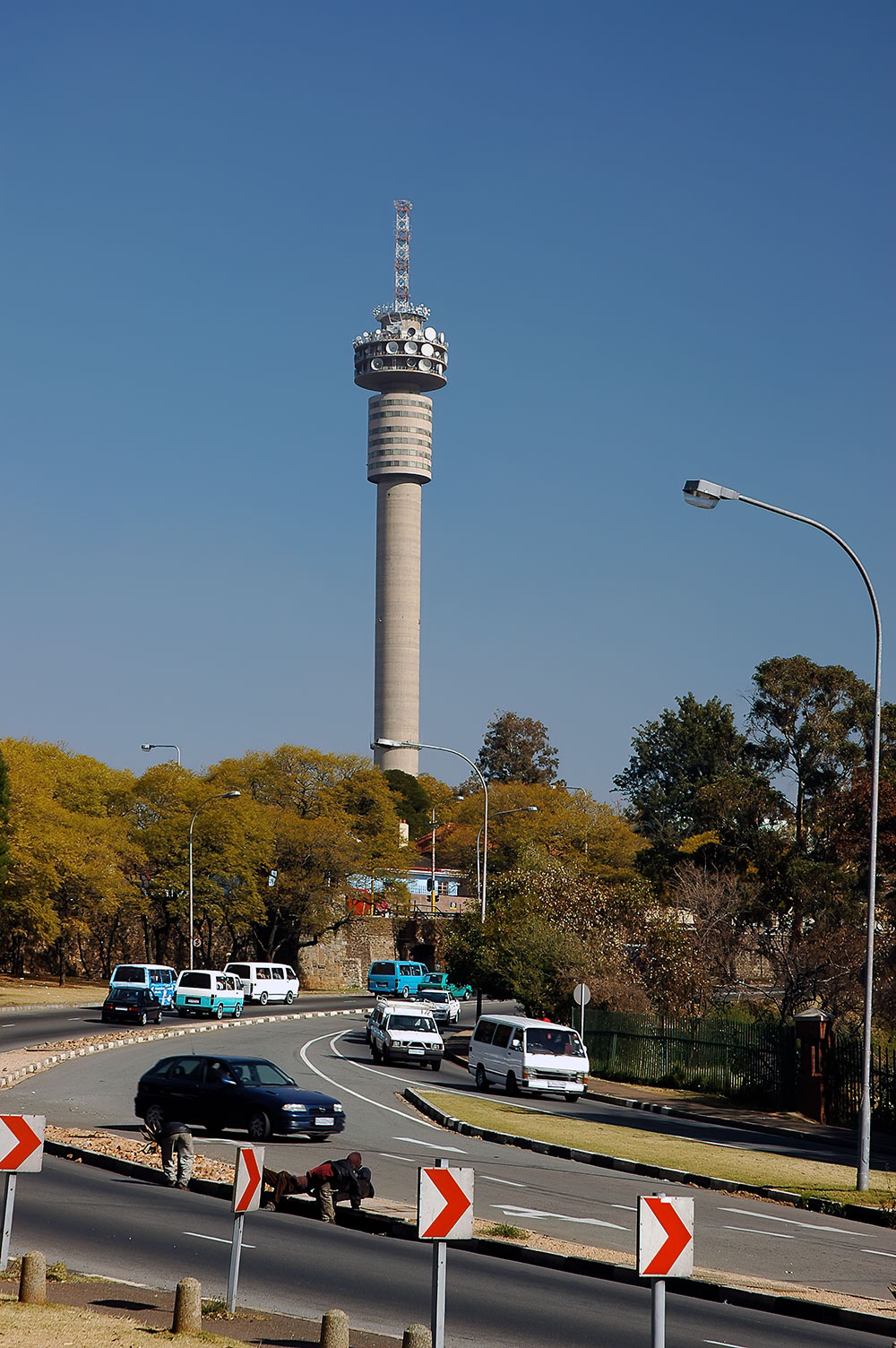
I think this is the Hillbrow Tower (formerly JG Strijdom tower). It is 269 m high
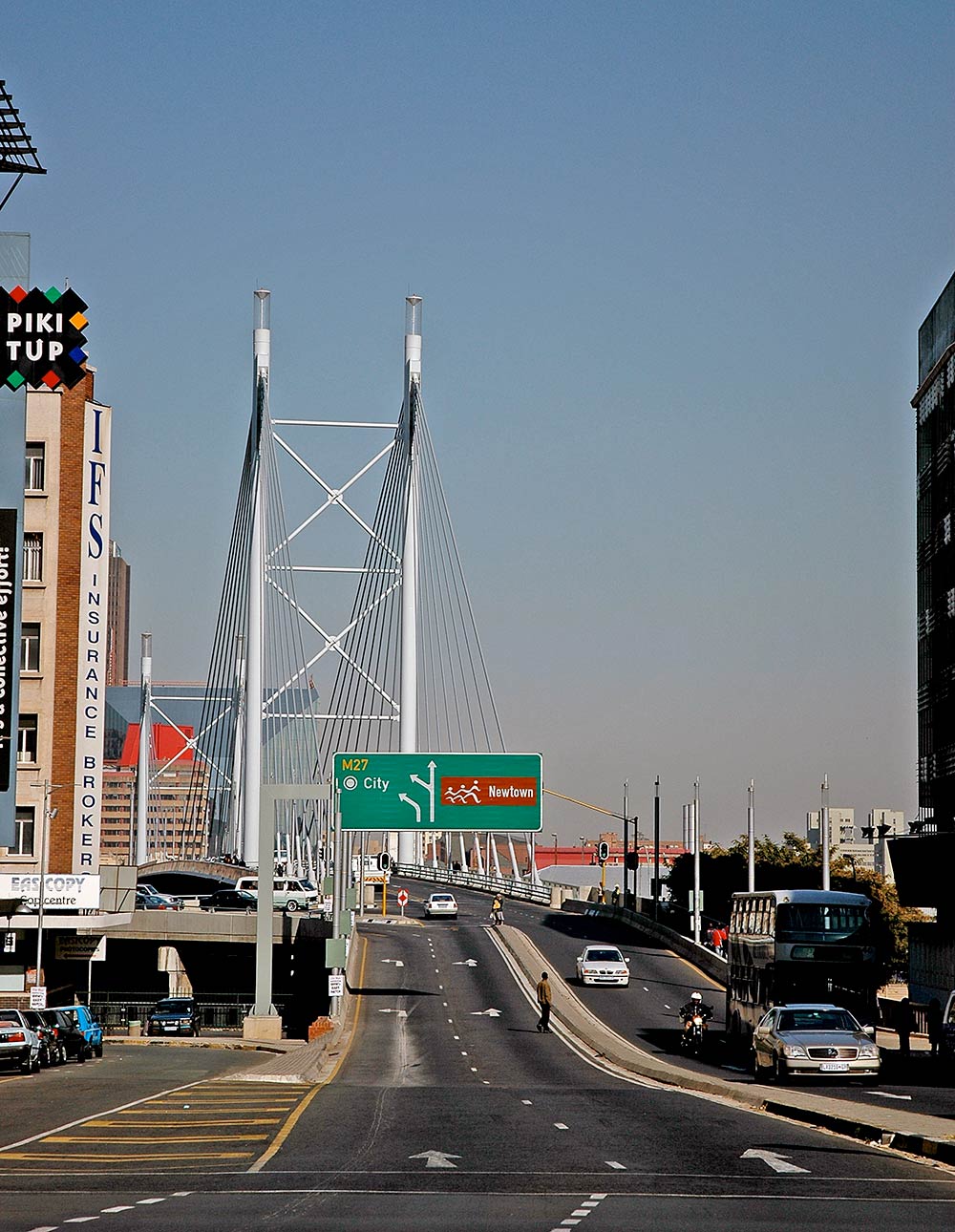
The Nelson Mandela Bridge is the fourth of five bridges which cross the railway lines and sidings located just west of Johannesburg Park Station. It was completed in 2003
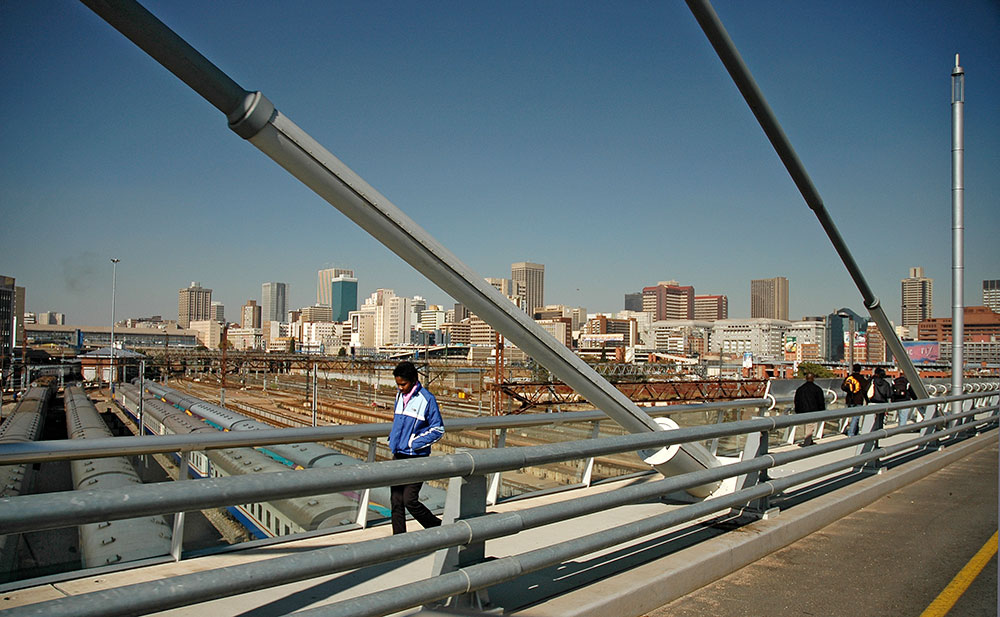
Johannesburg Park Station seen from the Nelson Mandela Bridge
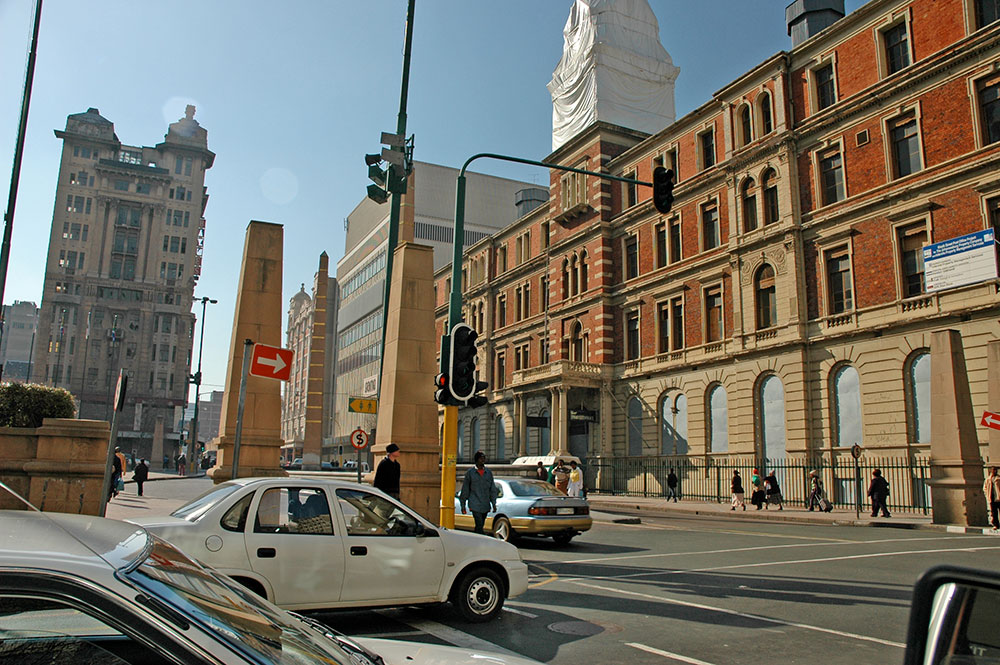
Rissik Street Post Office, built in 1897
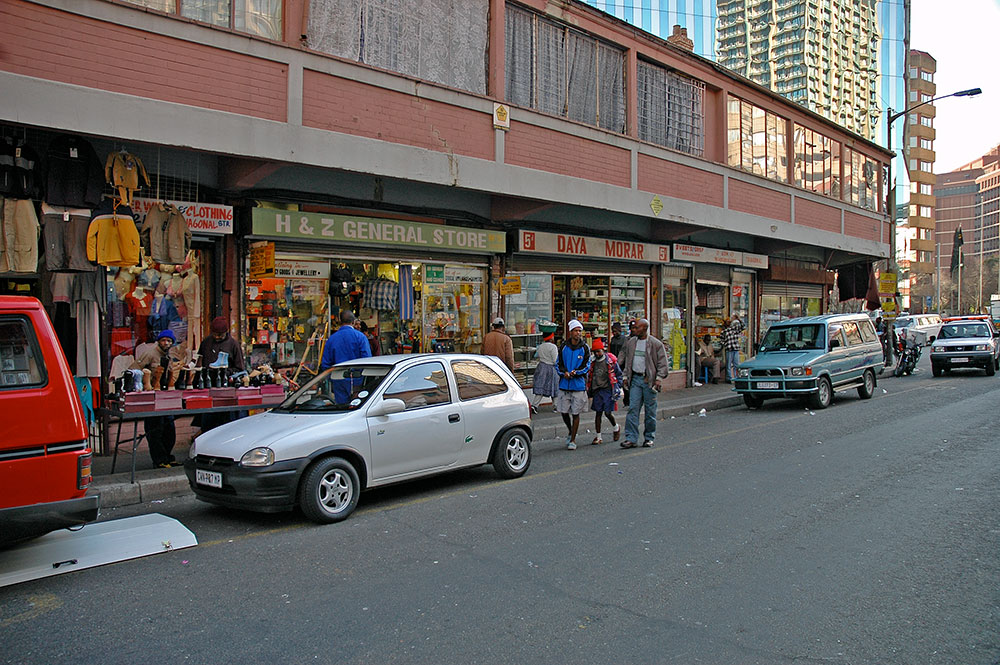
Johannesburg
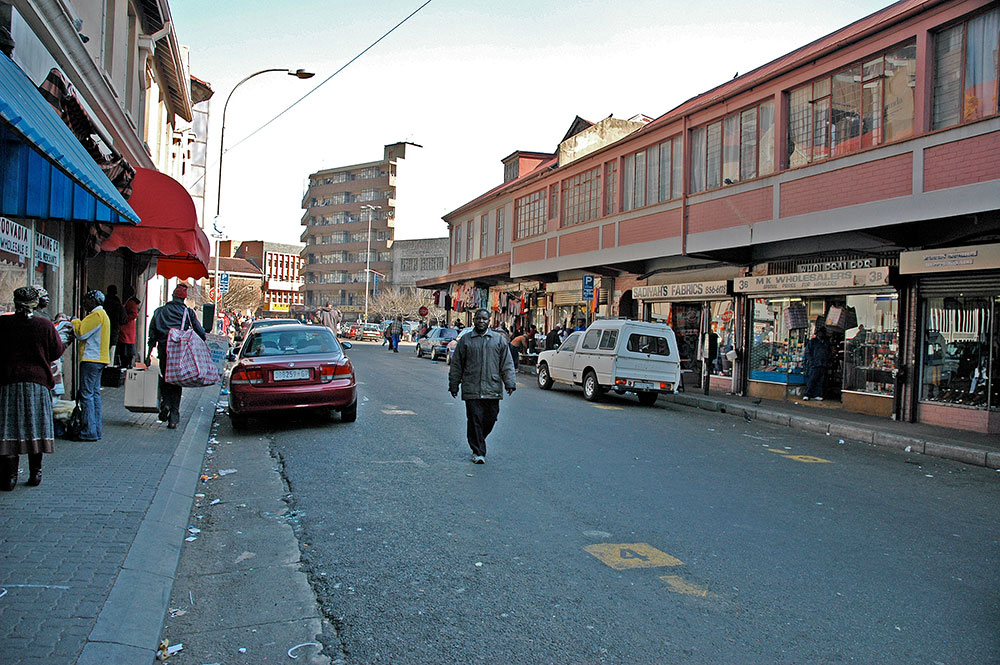
Johannesburg
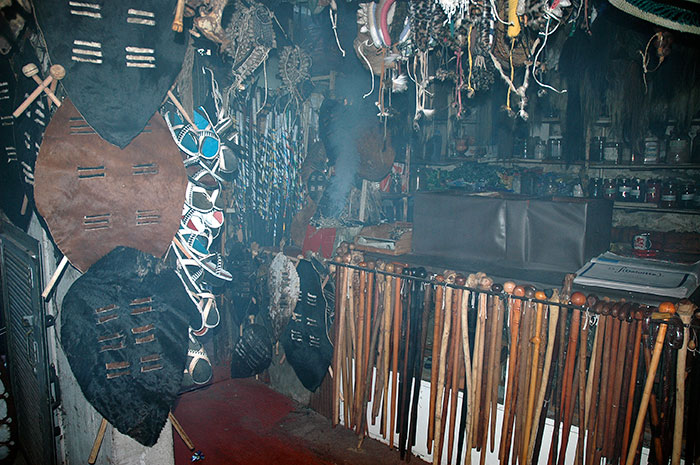
In a "voodoo" shop in Joburg. Strong smoke - strong medicine
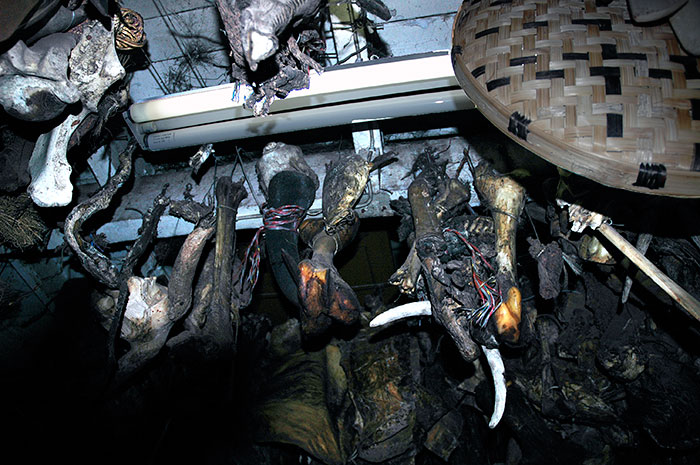
Animal remains sold in a so-called muti-shop. Witch-doctors or healers use all kinds of remedies in traditional medicine
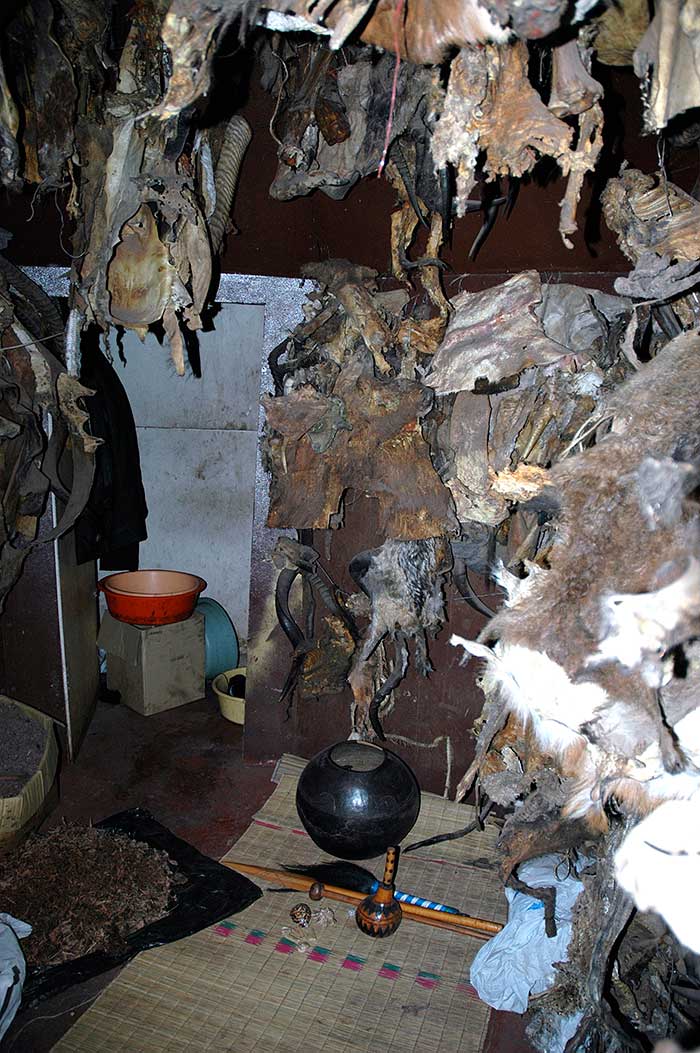
Living in the past. This is where local witch-doctors gather their remedies in Joburg
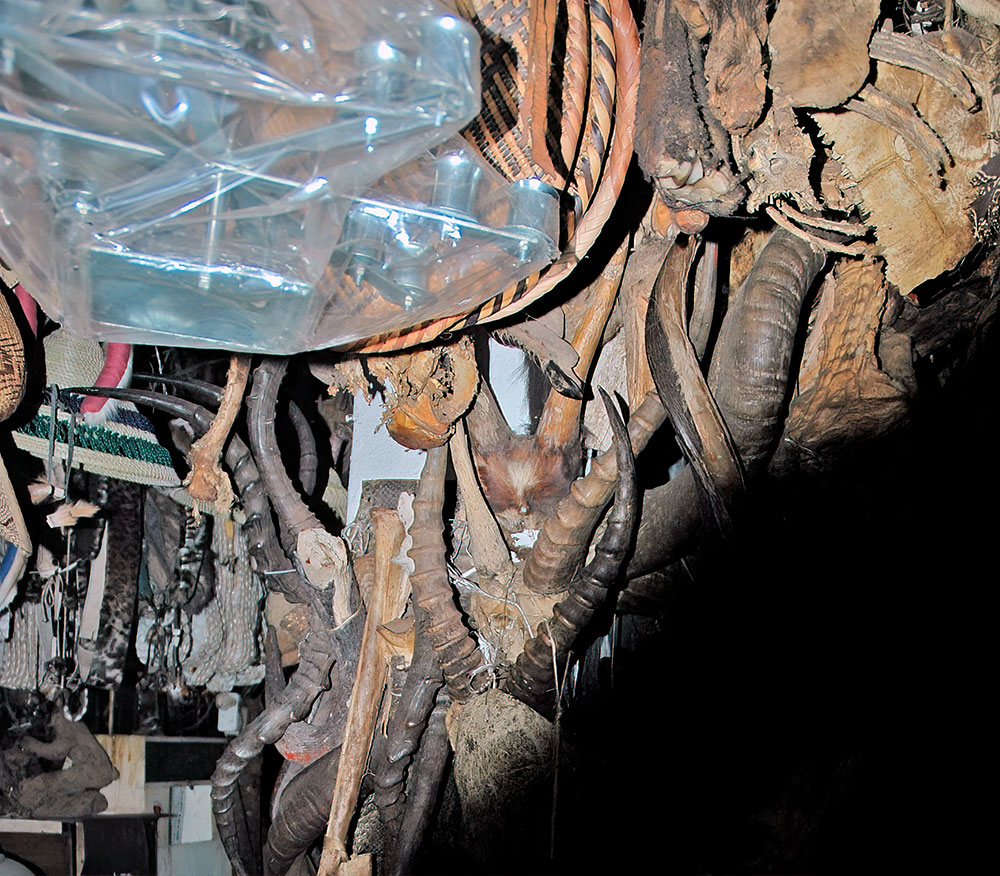
Spooky! Most photos from the shop were blacked out!
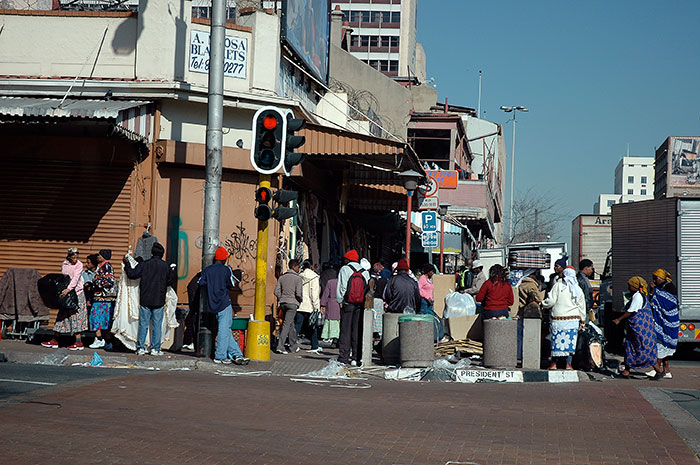
Street corner, Johannesburg
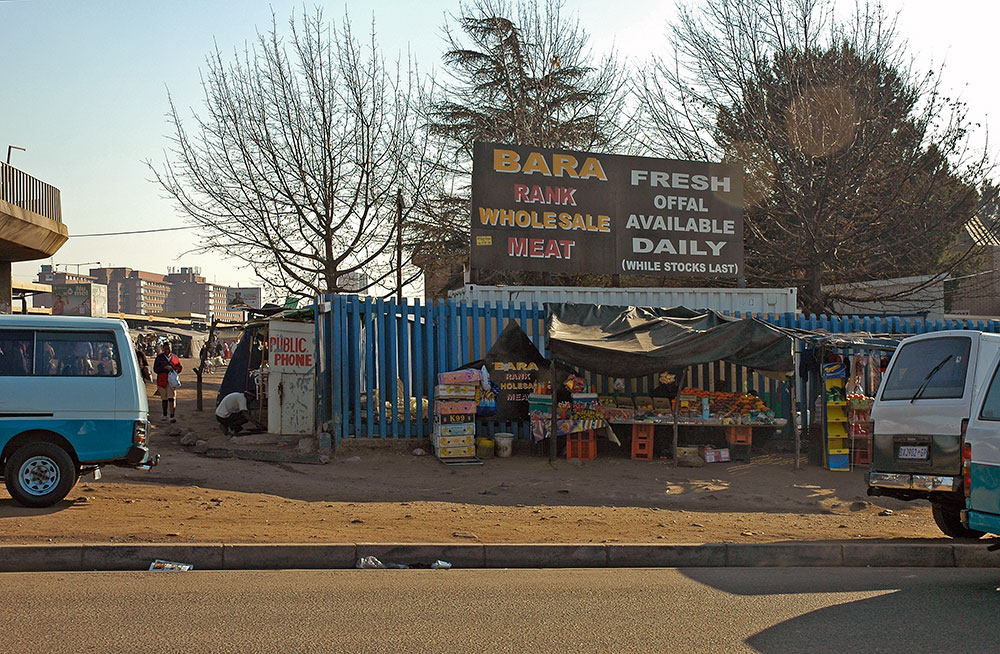
Meat sale
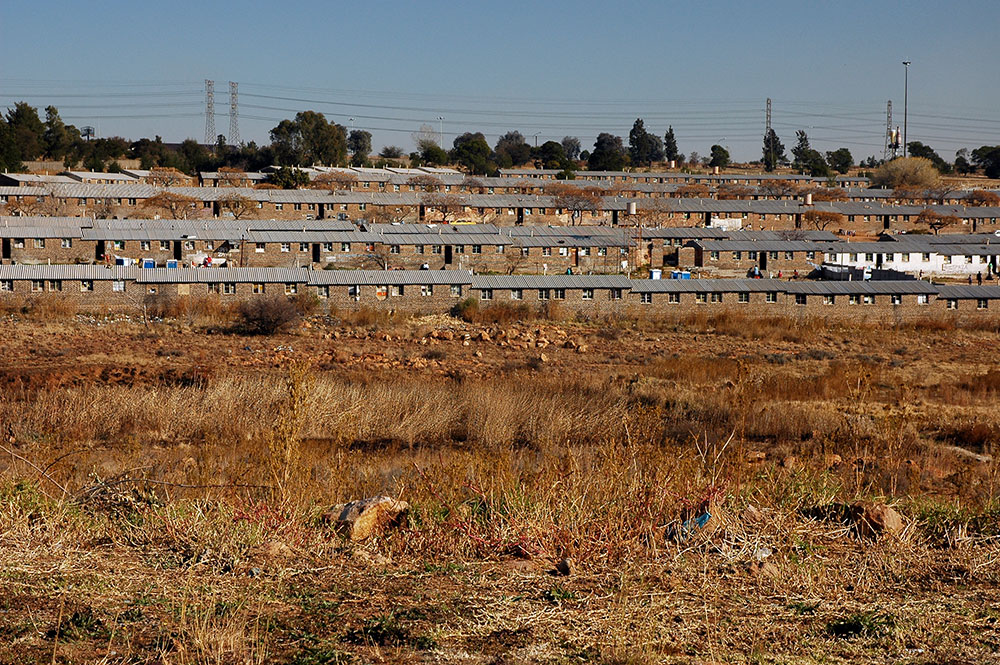
Brick buildings in the outskirts of Soweto
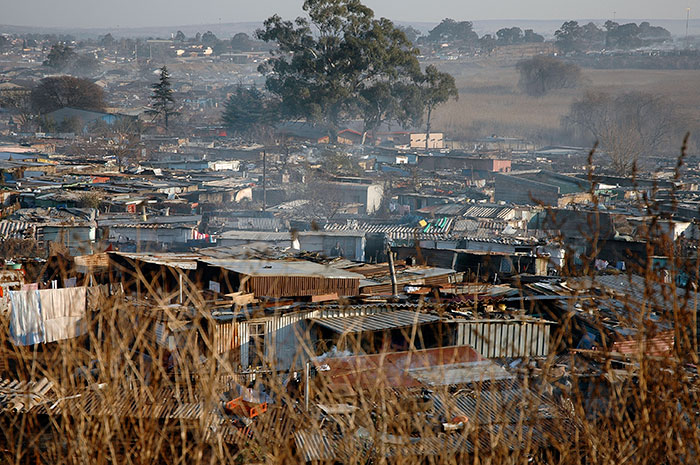
Shacks in Soweto
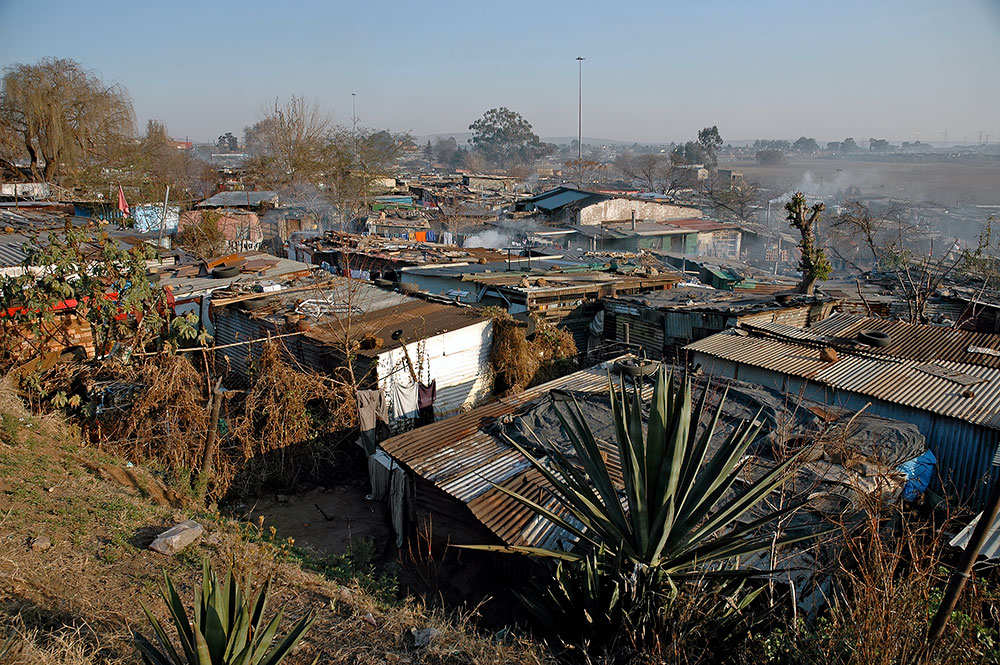
A charcoal haze is covering the Soweto shacks
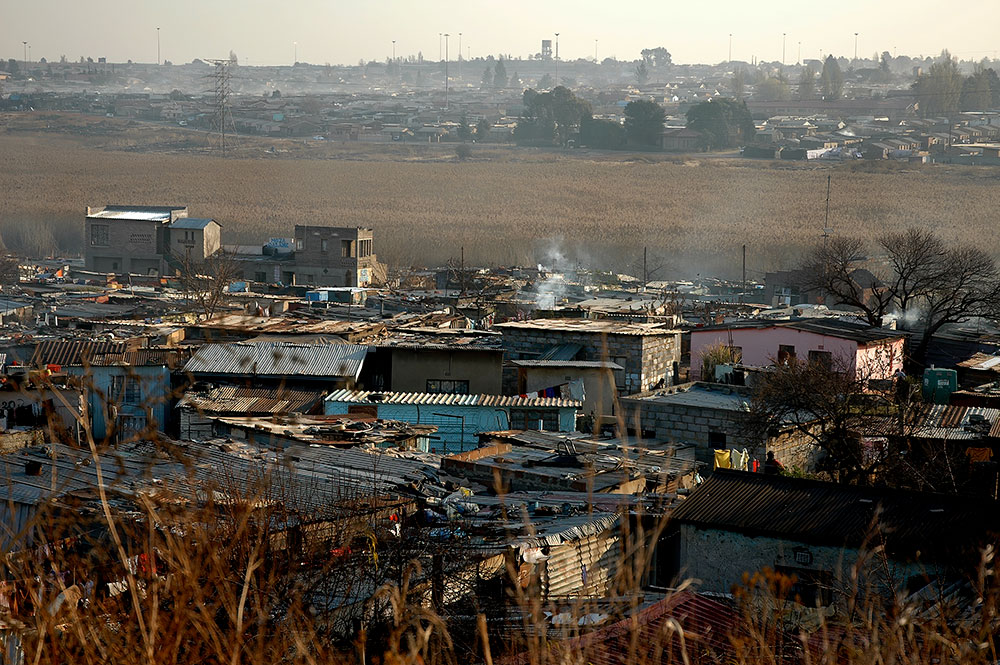
Life is probably not easy living in Soweto
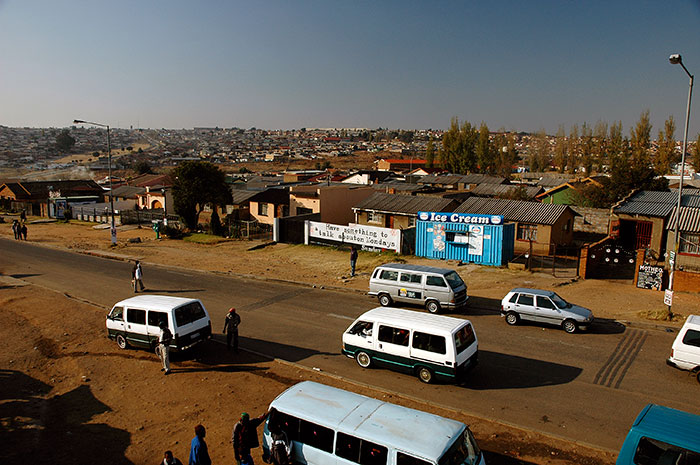
Soweto
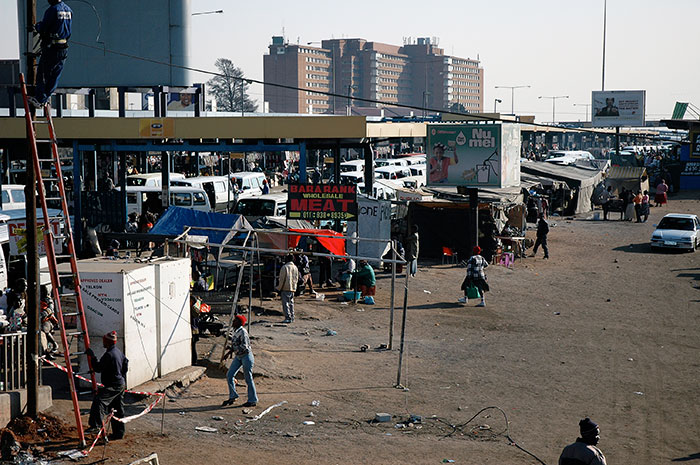
Soweto market
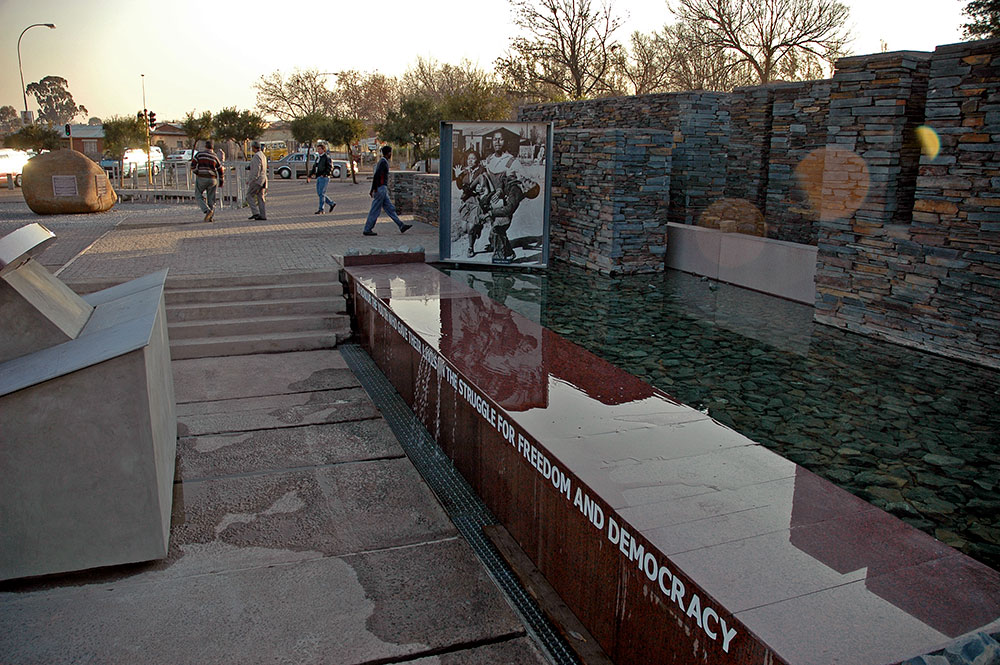
The Hector Pieterson Memorial in Vikalazi Street in Soweto is named after the 14-year-old boy who was the first killed by police in the June 16 1976 Soweto student’s uprising. The memorial was created to “honour the youth who gave their lives in the struggle for freedom and democracy”
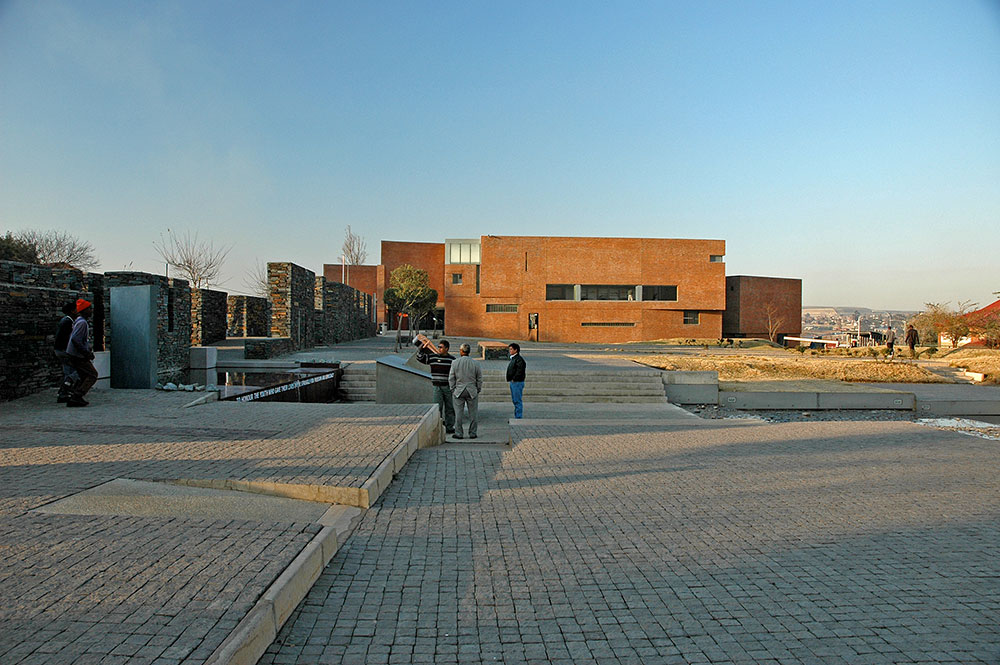
Hector Pieterson Memorial and Museum
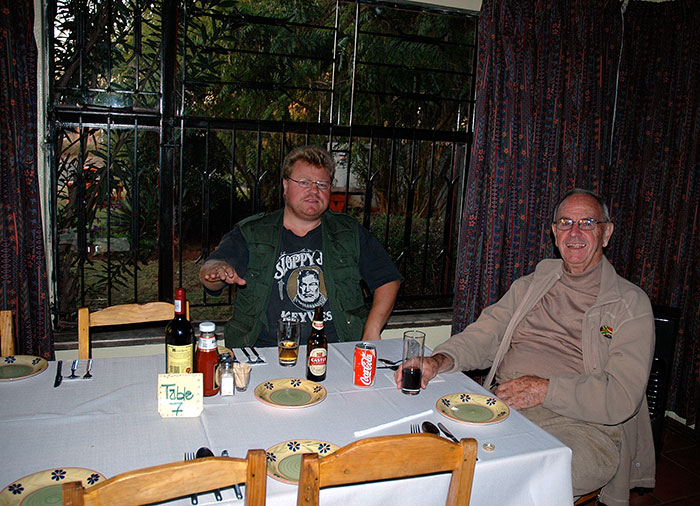
Me and Ken (the guide from Take a break Tours) in a Soweto restaurant next to the Walter Sisulu Museum
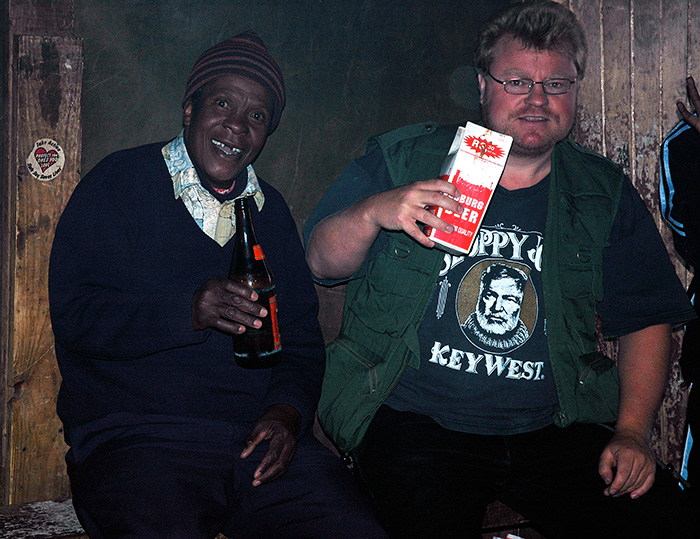
Drinking local beer in a smoky shack in Soweto. It tasted like "sats" (for the Norwegians!)
Johannesburg and Soweto
Yes, I managed to get robbed in Johannesburg, like so many others. Lost a camera and a cell phone, after being robbed by 5-6 blacks with knives. It was a life-threatening experience, as I got a knife tucked toward my belly. Even though I was told the area next to the Carlton Center was relatively safe to visit at daytime. It turned out not so, because I was mugged at 11 AM, in the middle of a crowded street. And nobody lifted a finger to help. And why should they? I was jus another stupid white tourist venturing into this metropol. In retrospect, I was probably partly to blame. As I took a local taxi to town, and was dropped off a few blocks from the Carlton Center. I should have asked to be dropped off on target. Joburg, as they call it, is of course a very dangerous city, and one of the murder capitals of the world. Stay away, don't visit downtown of this city, it is as simple as that. It is very little to see there, anyway.
I stayed in a guesthouse next to the airport during these days, but wanted to see the city and also the famous township of Soweto. The best and safest way to do this is to hire a local guide. I bought a Johannesburg/Soweto half day trip from a company called Take a break Tours, and was very happy with the guiding. The guide Ken (a 76 years old chap!) showed me one of Witwatersrand's first gold mines, the Ferreira mine, today situated below the Standard Bank on Simmonds Street. He then took me to Soweto, the black township just outside of Joburg with approximately 3.5 million citizens. The shacks make up only about 15% of Soweto, to my surprise. The rest of the city consists of small brick buildings, not looking too bad. We visited a local market, and went inside a shack full of smoke housing a local "bar", or something. I had to taste a local brew, served in a carton (see the picture above). To put it simple, it didn't taste good. Of course, we also passed the house where Winnie Mandela lives today (with a lot of security measures), and the street where both Nelson Mandela and Desmond Tutu used to live (two Nobel laureates in one street), and the Walter Sisulu Museum.
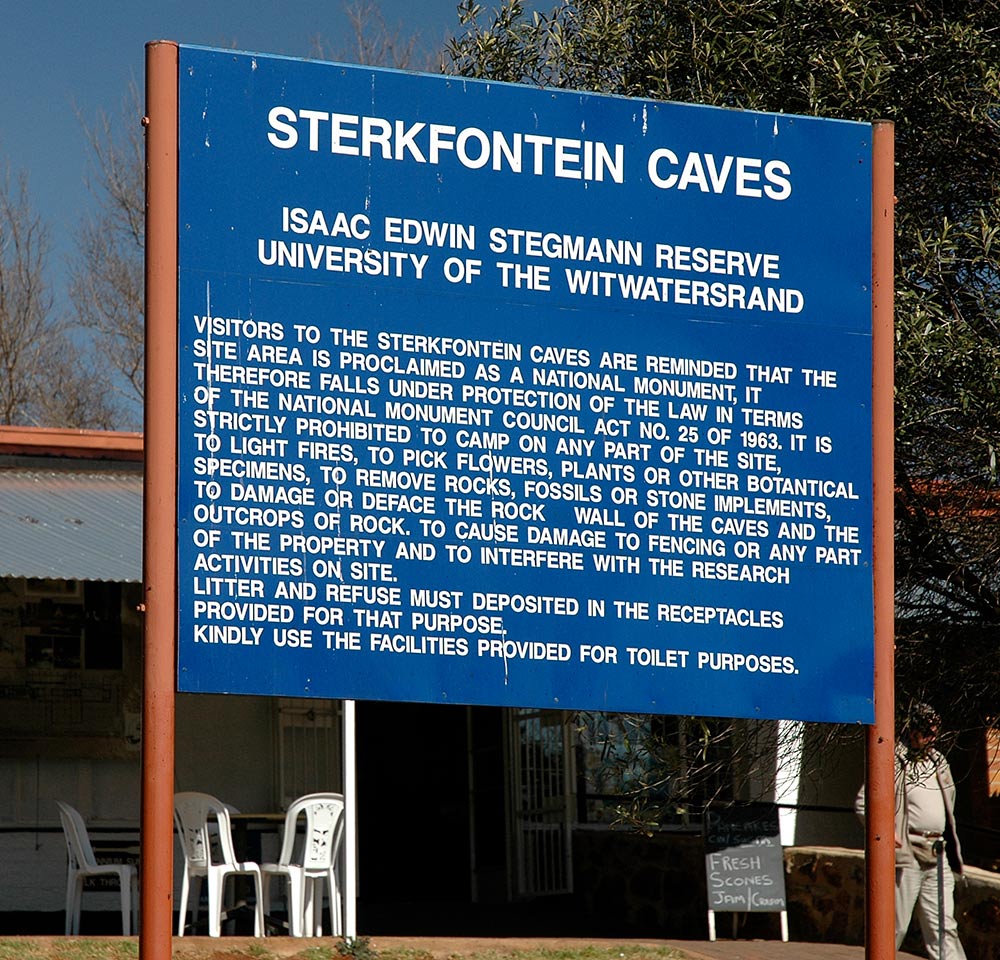
Sterkfontein Caves north of Johannesburg
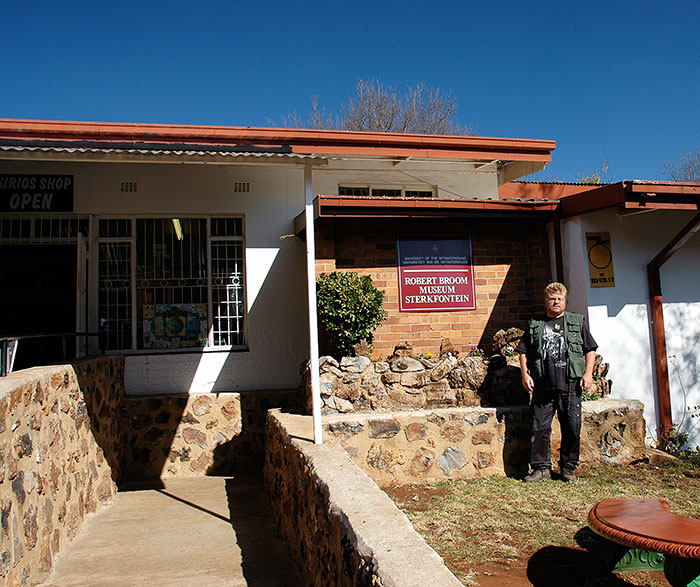
At Robert Broom Museum, Sterkfontein Caves, where the Australopithecus africanus fossils were discovered
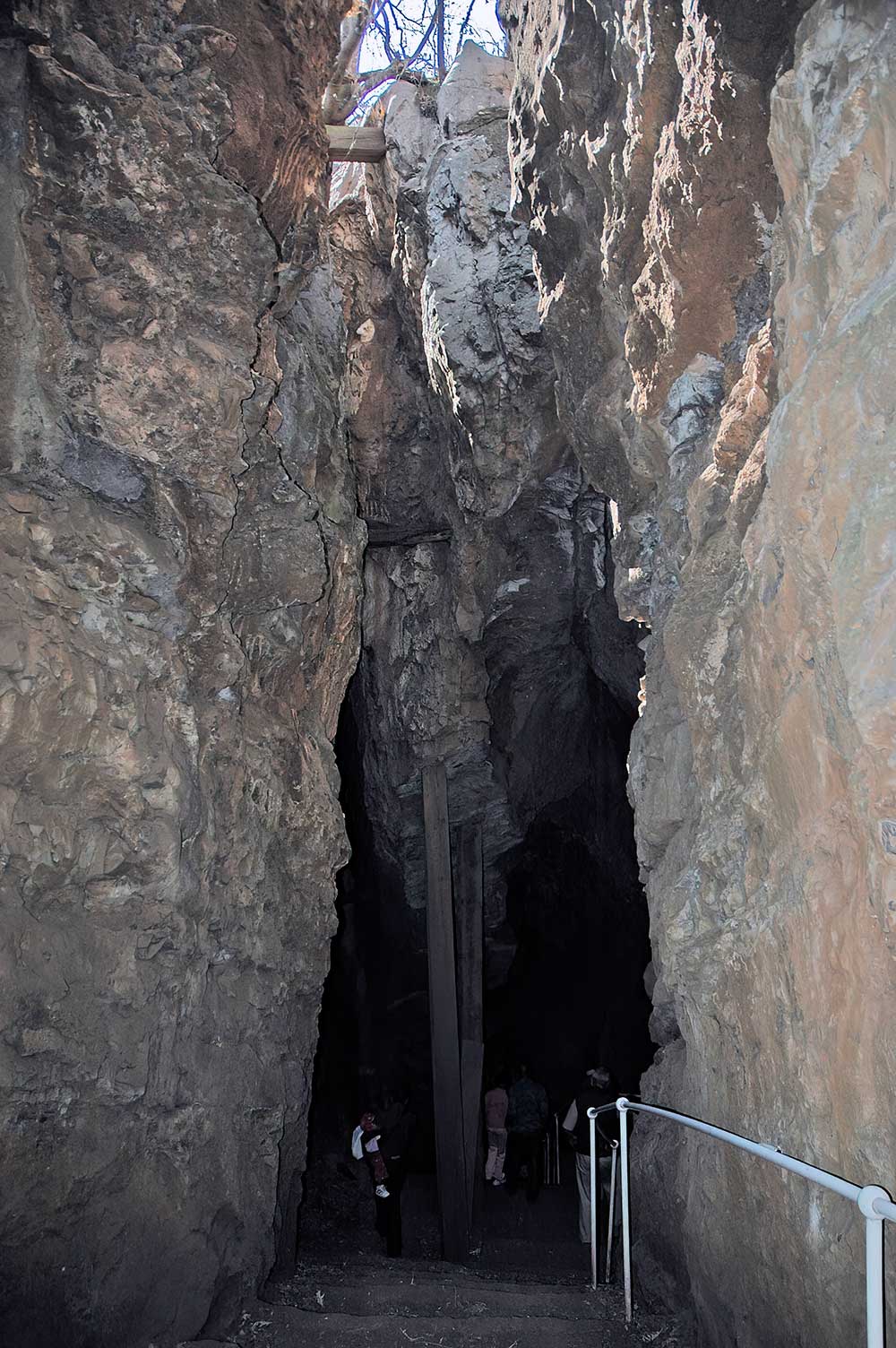
Cave entrance at Sterkfontein
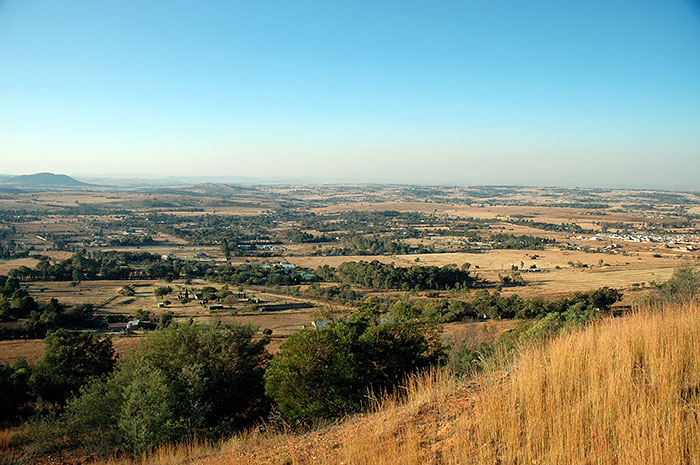
Landscape south of Sterkfontain
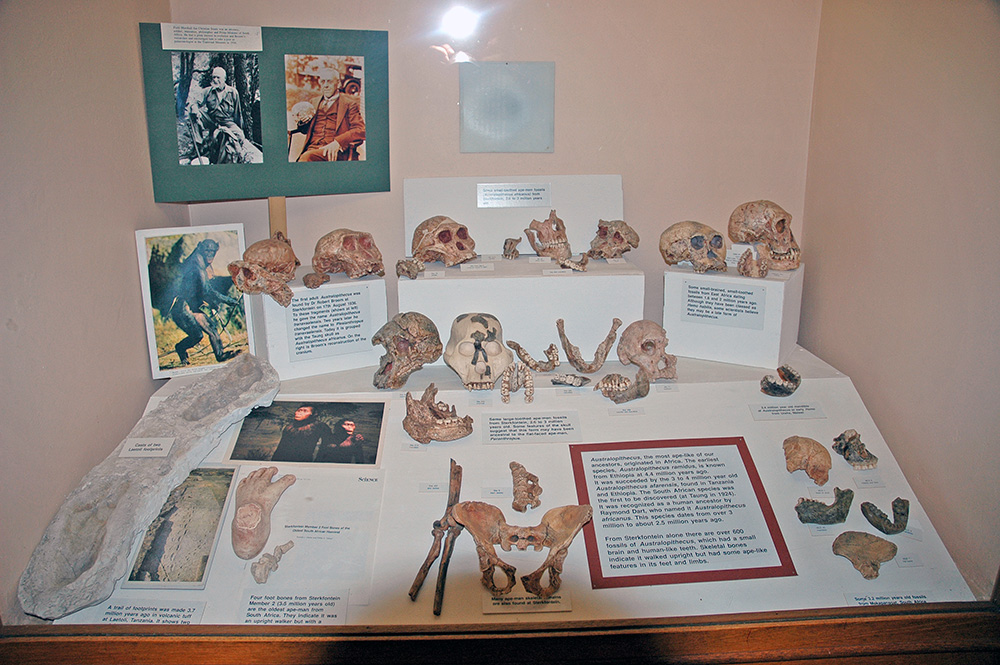
Display of hominin fossils at Sterkfontein Caves
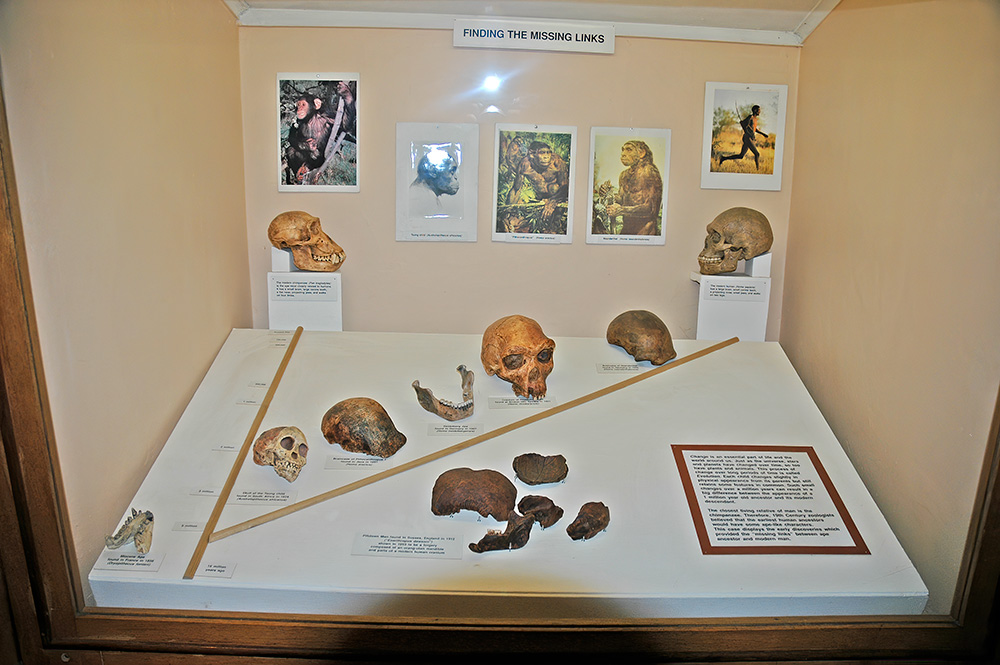
"Finding the missing link", Sterkfontein Caves
Sterkfontein and the Old Kromdraai Gold Mine
On Saturday, I ordered a new trip from the same guide who took me to Soweto. This time to see the Sterkfontein Caves, a familiar name for most biologists. This is the place where the first specimen of Australopithecus africanus was found:
"Sterkfontein is one of the world's most productive and important palaeoanthropological sites. It is the place where the very first adult ape-man was found by Dr. Robert Broom in 1936. This ancient cave system has over the years revealed a sequence of deposits with fossils dating from about 3.5 to 1.5 million years ago, a period of time which spans the early development of the family of man - the hominids. In addition to almost 500 skull, jaw, teeth and skeletal fossils of these early hominids, there are many thousands of other animal fossils, over 300 fragments of fossils wood, and over 9,000 stone tools which include some of the earliest manifestations of human culture on earth. Some of the youngest deposits in the cave also contain fossils and tools from the period just prior to the emergence of modern humans, the period ca. 100.000 to 250,000 years ago, most widespread of which are the dolomites of the Transvaal Supergroup. Dolomite, as well as limestone, is slightly soluble in acidic groundwater (groundwater that contains carbon dioxide in solution) and readily forms caves and sinkholes".
The caves were not that impressive, as we were not allowed to venture into the area where they were still digging. And the museum at Sterkfontein could have been more extensive. The next stop was at the Old Kromdraai Gold Mine, where the Black Reef was mined, before the Witwatersrand was discovered. The owner took me into the mine, and showed me how hard it must have been to work in a gold mine late in the 19th century. The mine was occupied by bats, and an underground lake runs all the way to the Sterkfontein Caves, some 6 km away.
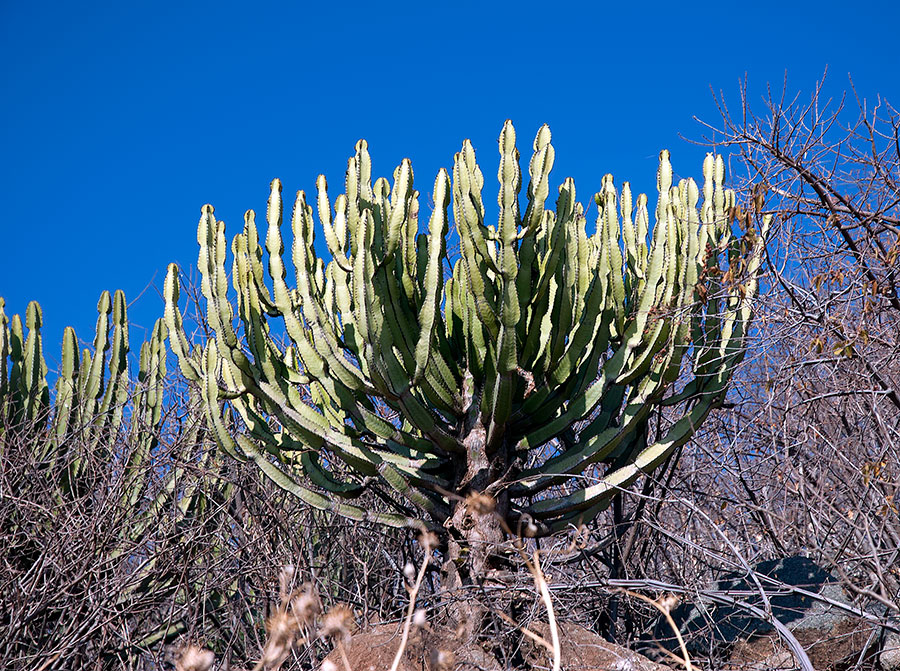
Transvaal Candelabra Tree (Euphorbia cooperi), Limpopo, South Africa
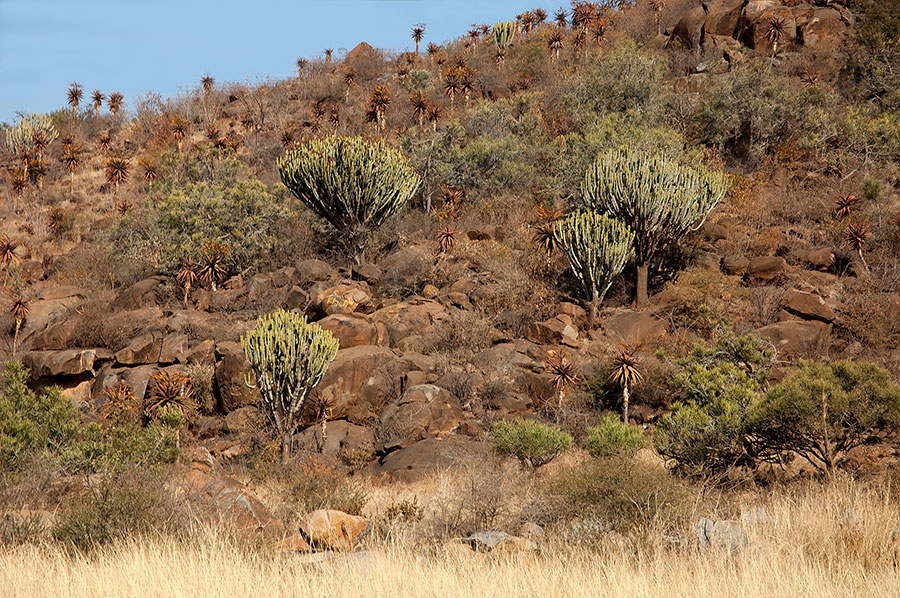
Candelabra Tree and Mountain Aloe, hill in Limpopo
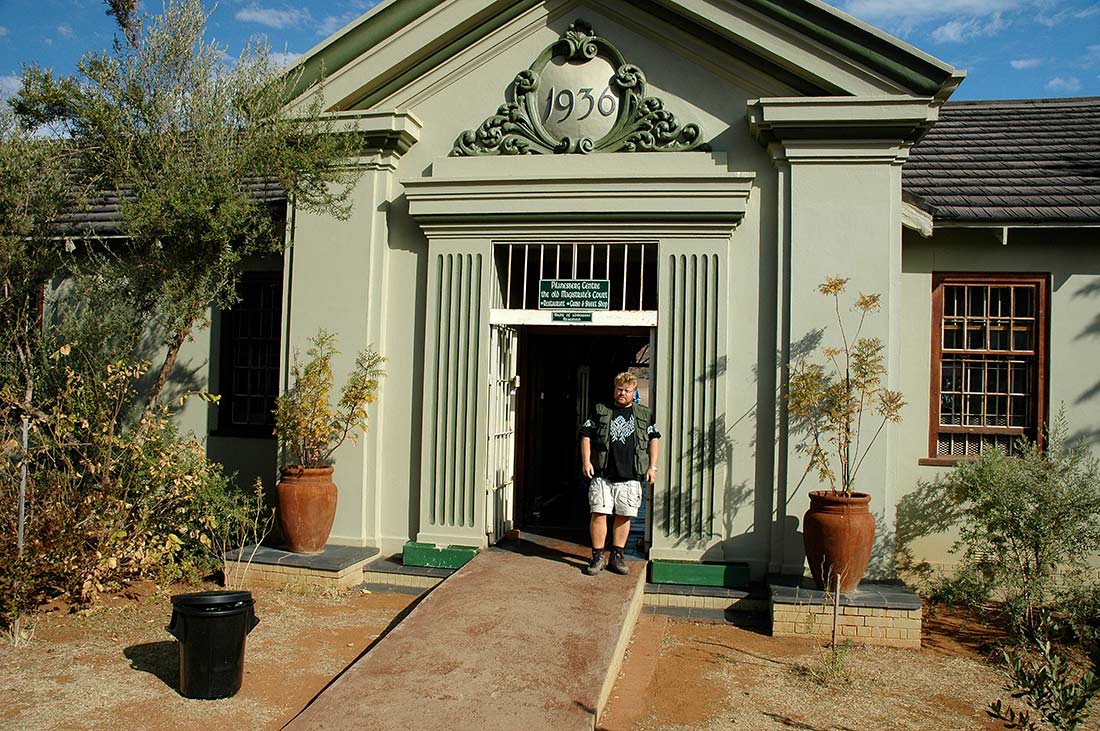
Pilanesberg Centre
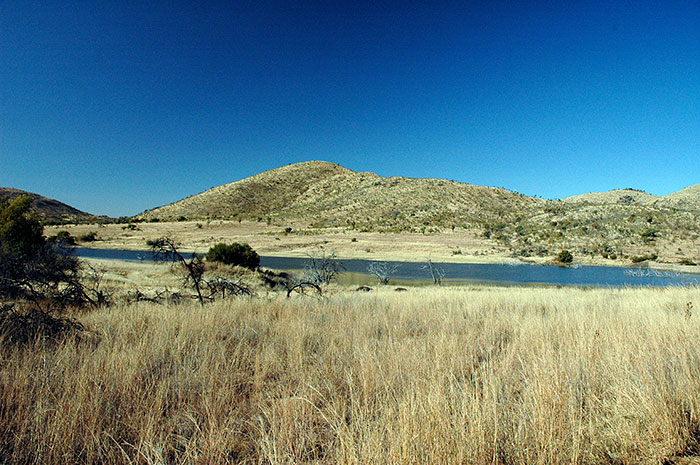
Pilanesberg National Park west of Pretoria. After experiencing Botswana, a rather dull park
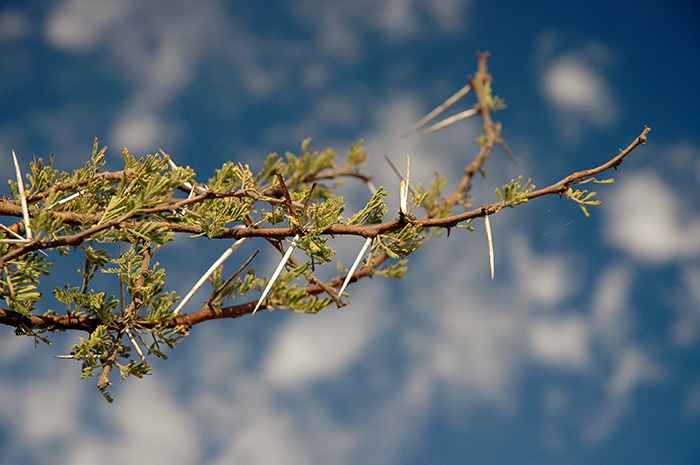
Spiky brush (Umbrella Thorn Acacia - Vachellia tortilis ssp. heteracantha) in the African outback
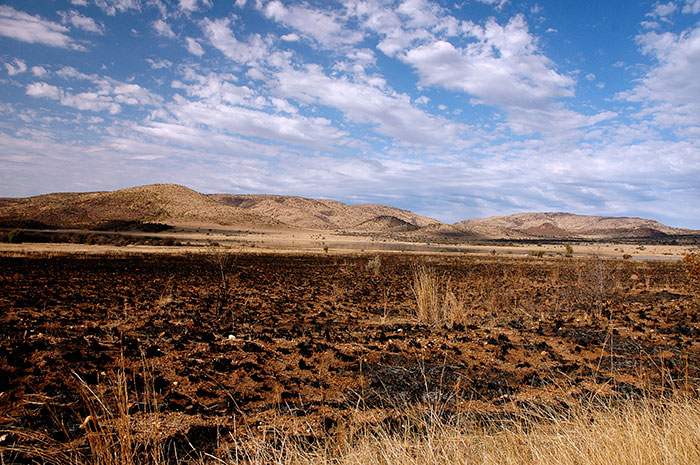
Recent wildfires (2004) in Pilanesberg National Park
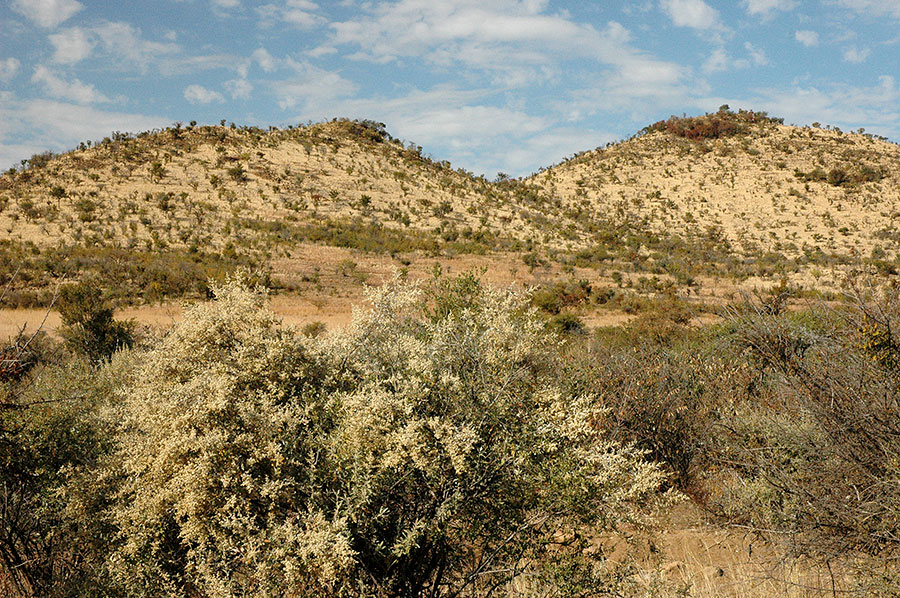
Pilanesberg National Park
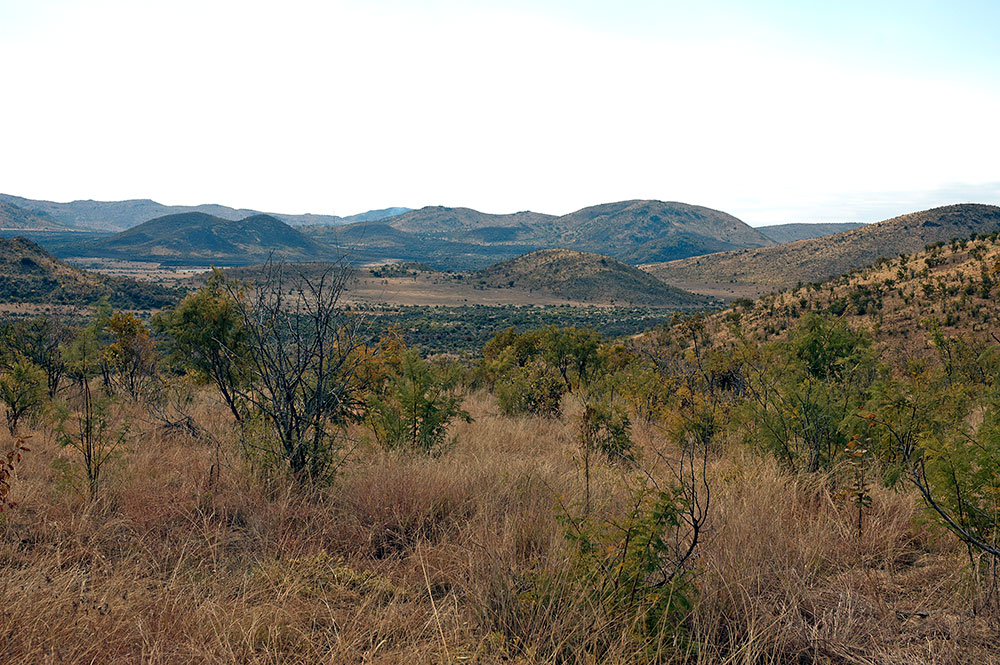
Pilanesberg National Park
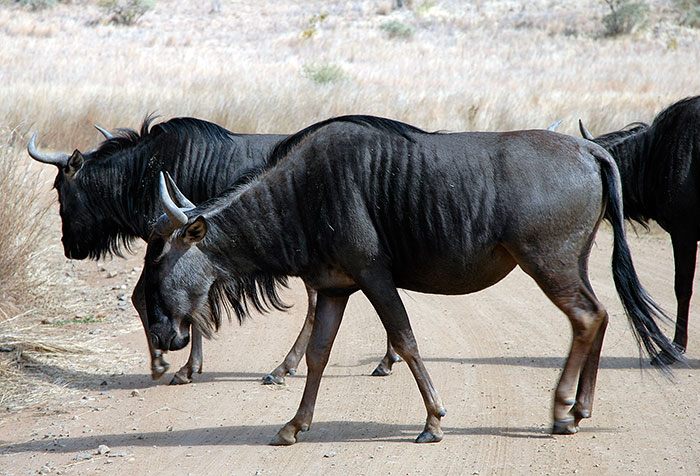
Bridled Gnu / Blue Wildebeest, Pilanesberg NP
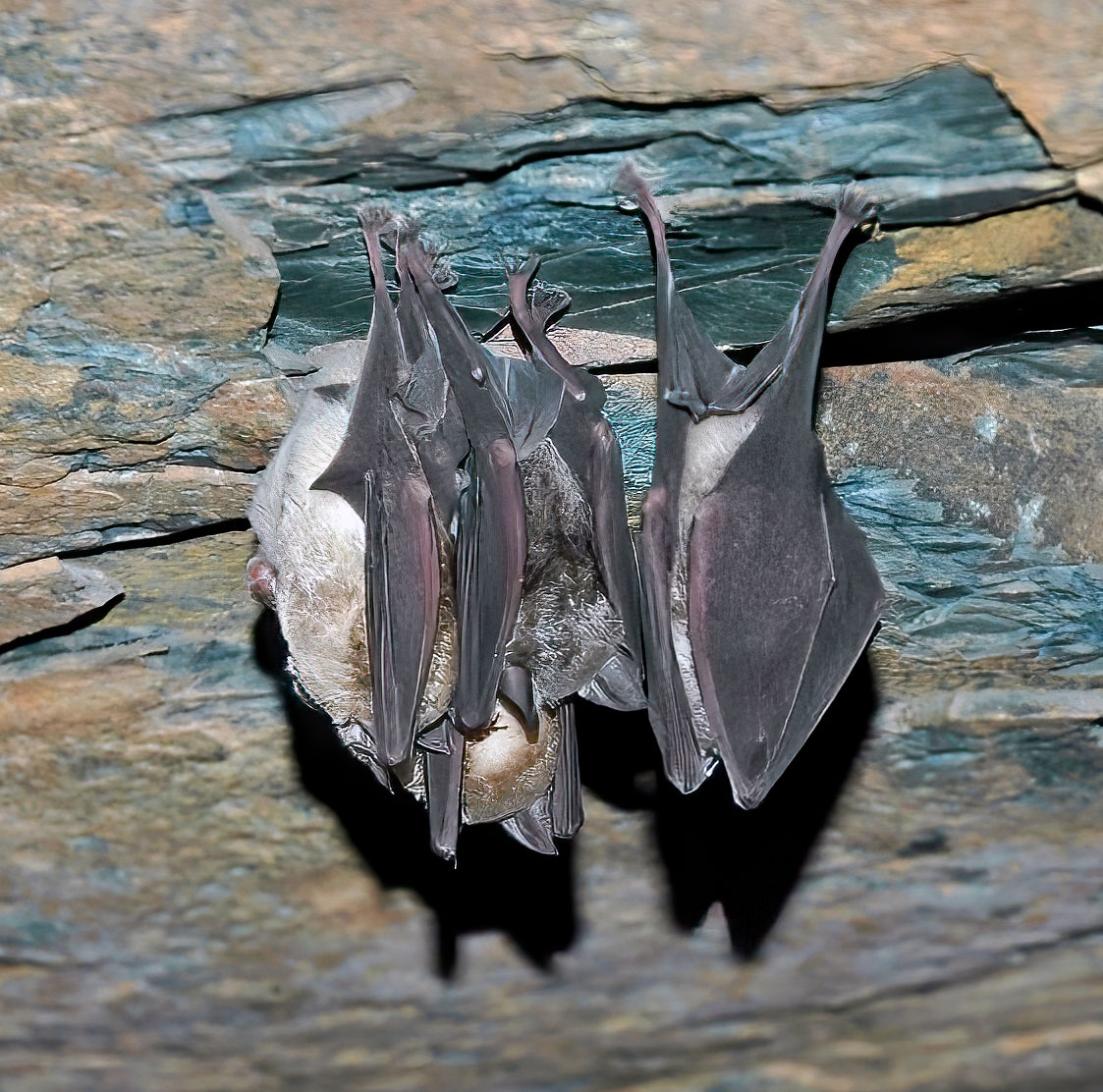
Horseshoe bats (Rhinolophus sp.) in the Old Kromdraai Gold Mine. The Covid-19 coronavirus (SARS-CoV-2) has been linked to Rhinolophus bats
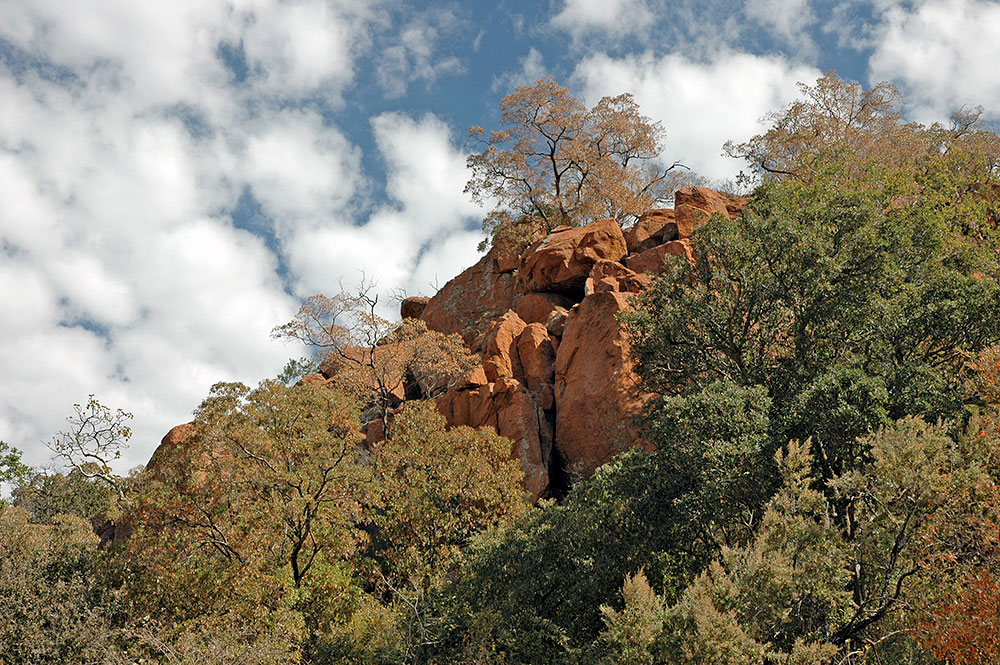
Pilanesberg National Park
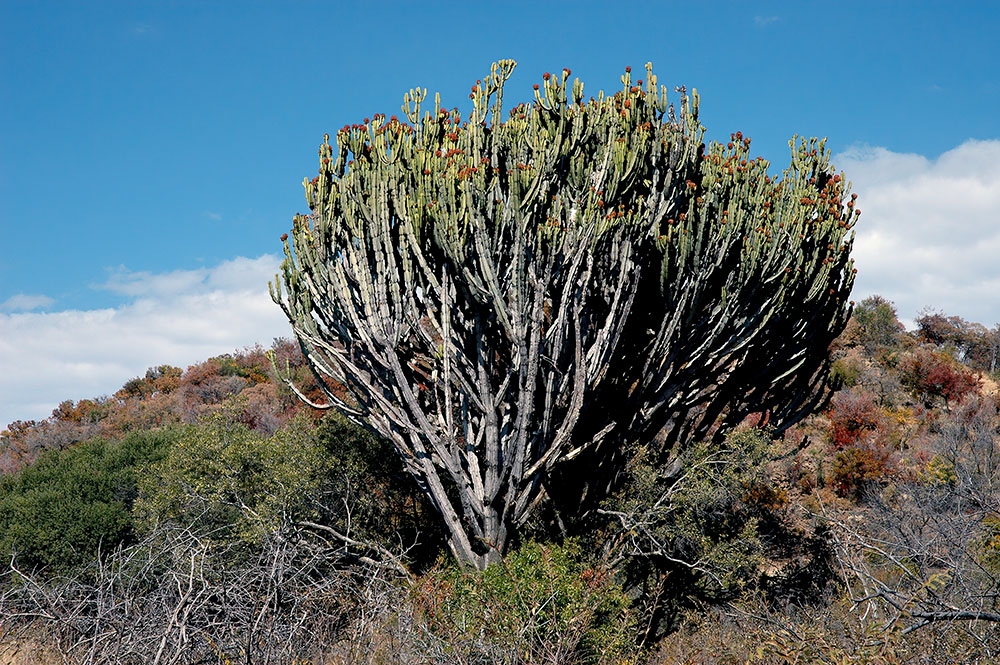
Candelabra Tree, Pilanesberg National Park
Pretoria
Returning from the safari, I spent three days in a guesthouse just north of Pretoria. Instead of lingering even more in Johannesburg, I preferred to see a new city. Pretoria is the administrative capital of South Africa, and the crime level here is supposed to be lower than in Joburg. The South African government rest in the Union Buildings, overlooking the city, and with a view towards the tower of the Voortrekker Monument.
I caught a pneumonia the last days in Botswana, and was not feeling well during my stay in Pretoria. This affected my behavior, and I lost focus on photography (and other things!) these days. On my way back to Norway I got really sick, and ended up in hospital in isolation for three day when I came home after a nightmarish travel home (fever 41.5°C, I nearly died!) . This might have made me overly negative toward the safari operator when I wrote my review!
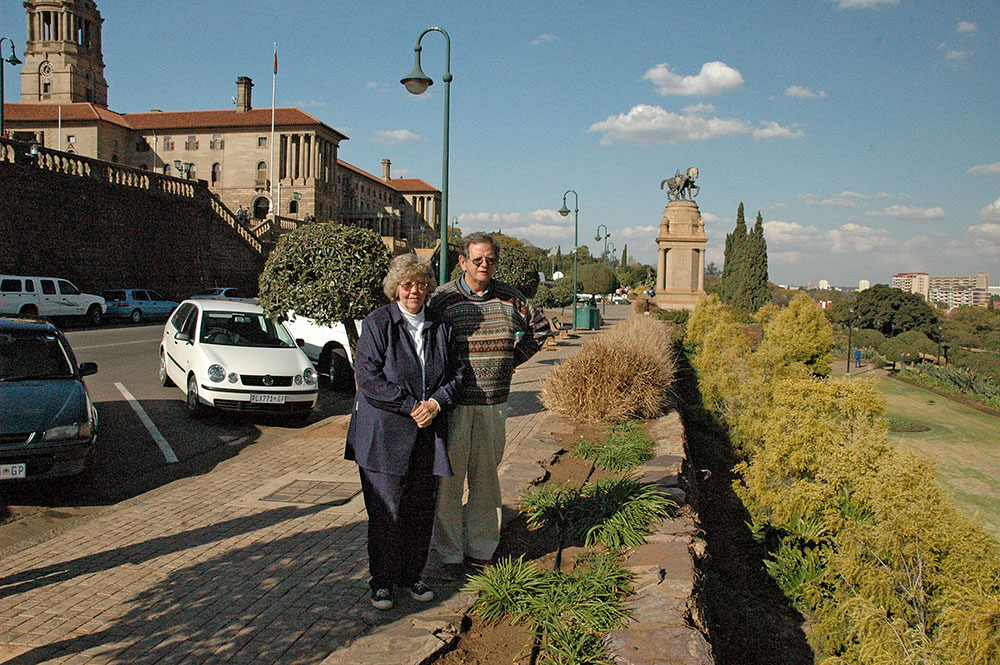
My hosts at Zambezi Lodge, Pretoria. This nice couple took me to Pilanesberg National Park, and showed my around in Pretoria

After having been robbed, I borrowed a revolver, and was ready for a fight. Well, not entirely true... But yes, this is the real thing, full of leaded bullets
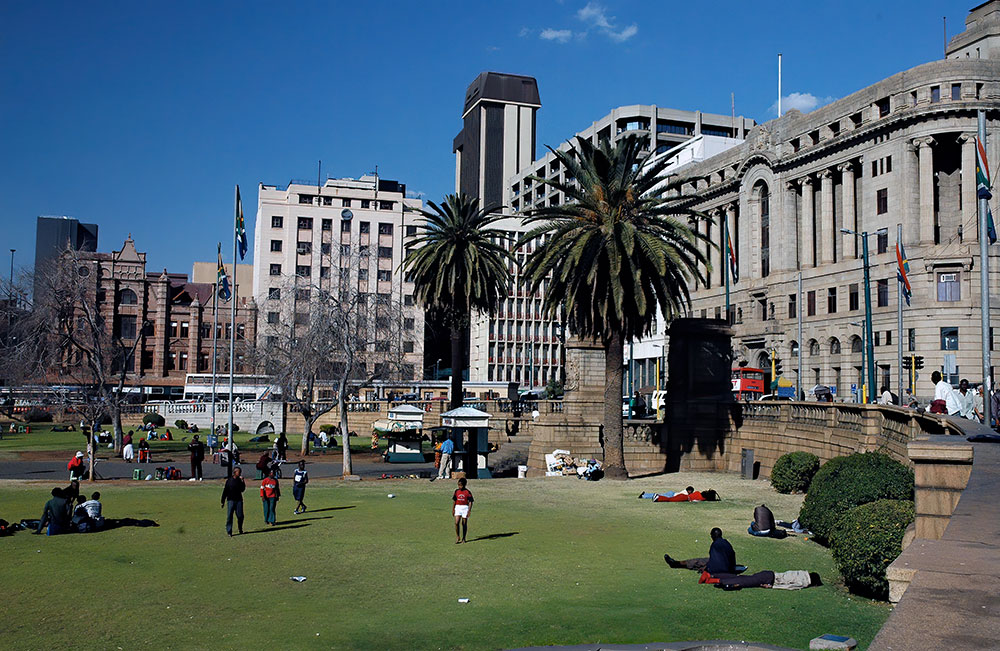
Downtown Pretoria
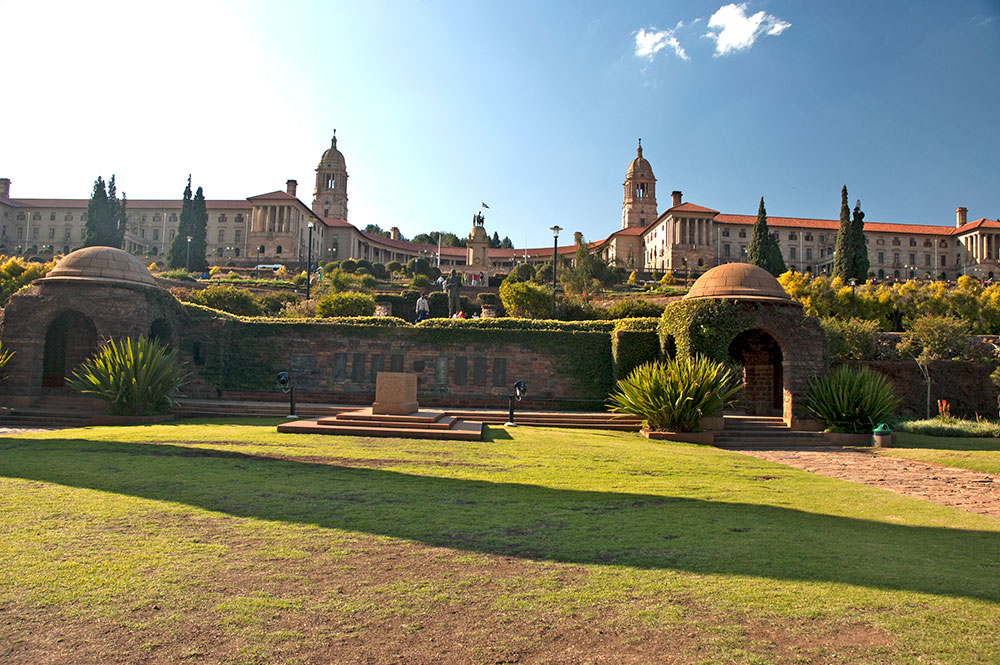
The Union Buildings form the official seat of the South African Government and also house the offices of the President of South Africa
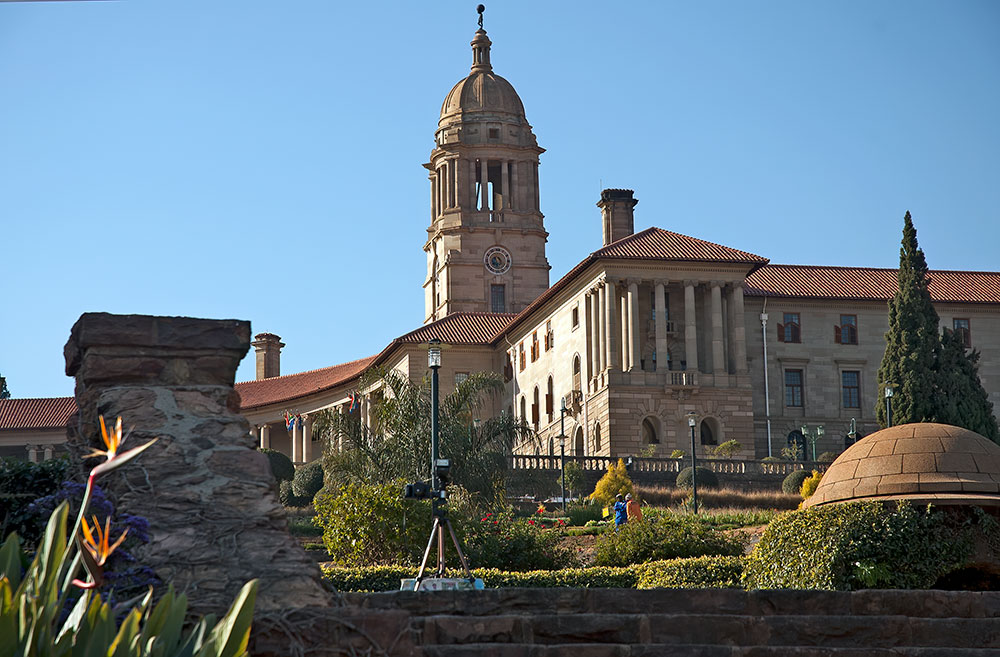
The eastern wing of The Union Buildings represents the English population of South Africa (according to Wikipedia..)
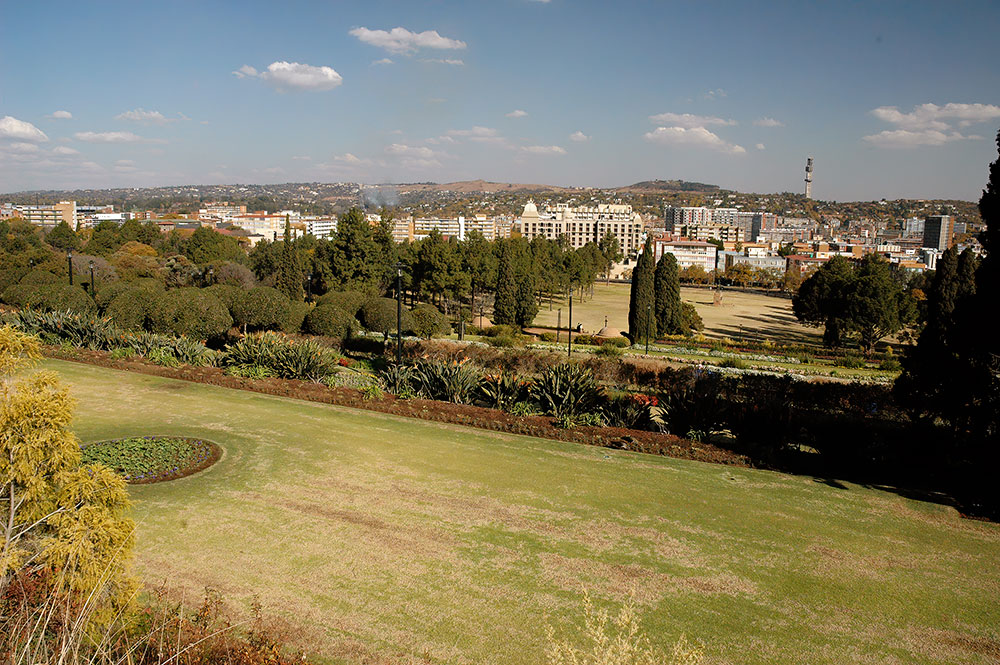
View from the Union Buildings
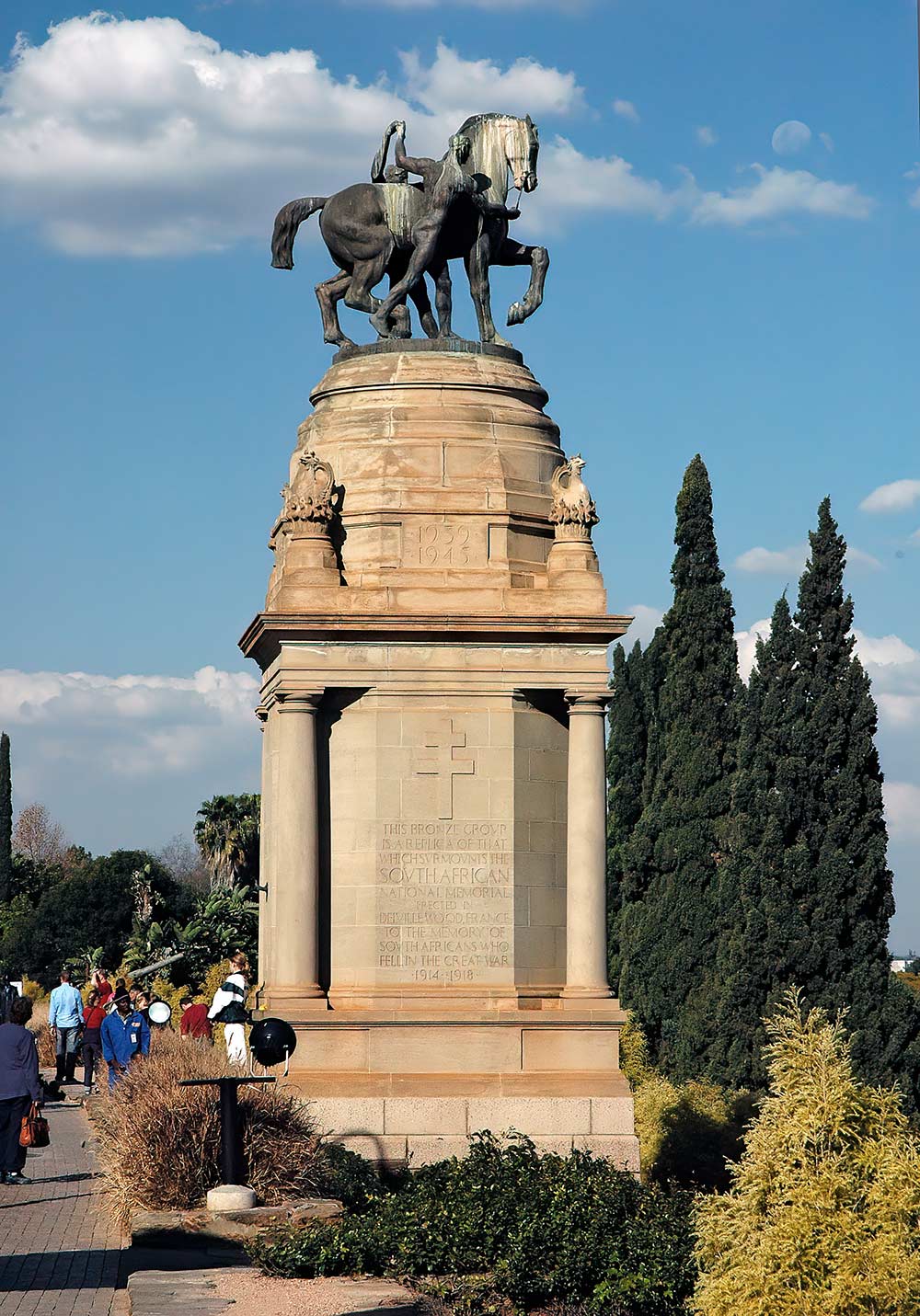
World War I memorial, Pretoria
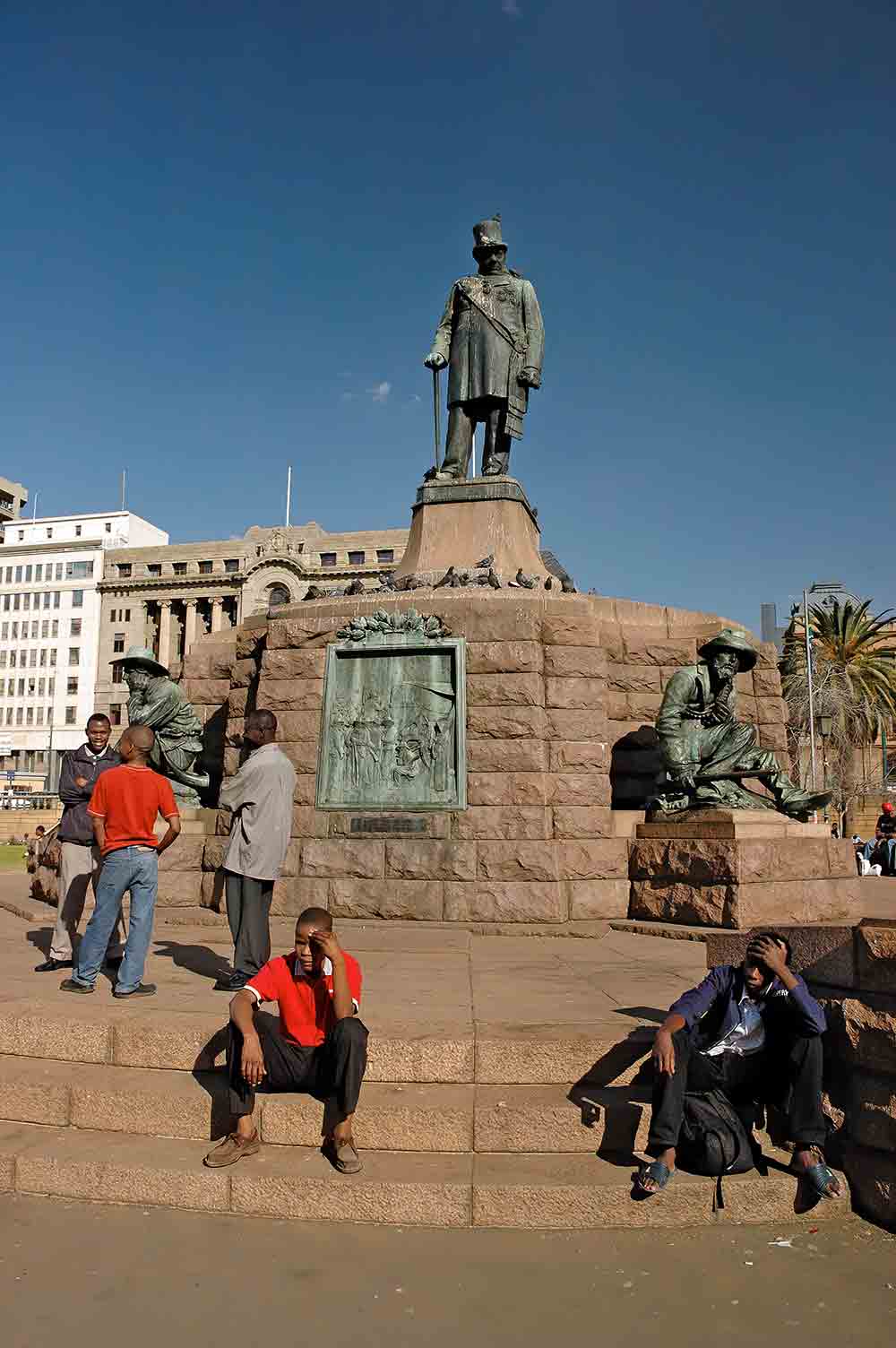
A statue of Paul Kruger, who was president of the Republic of South Africa from 1883 to 1900. Waiting to be teared down in 2020?
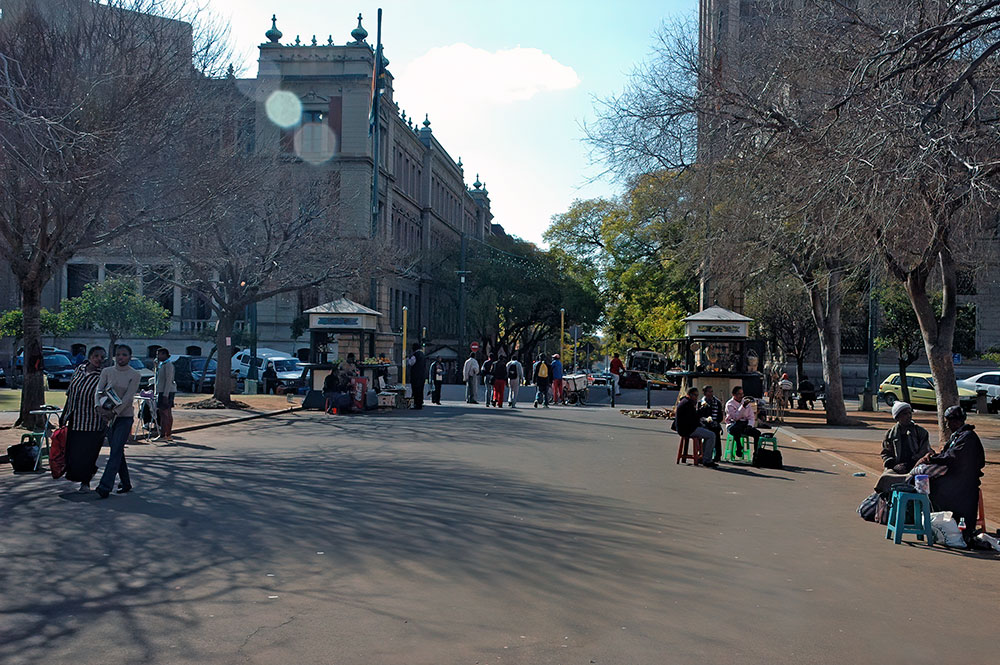
Pretoria
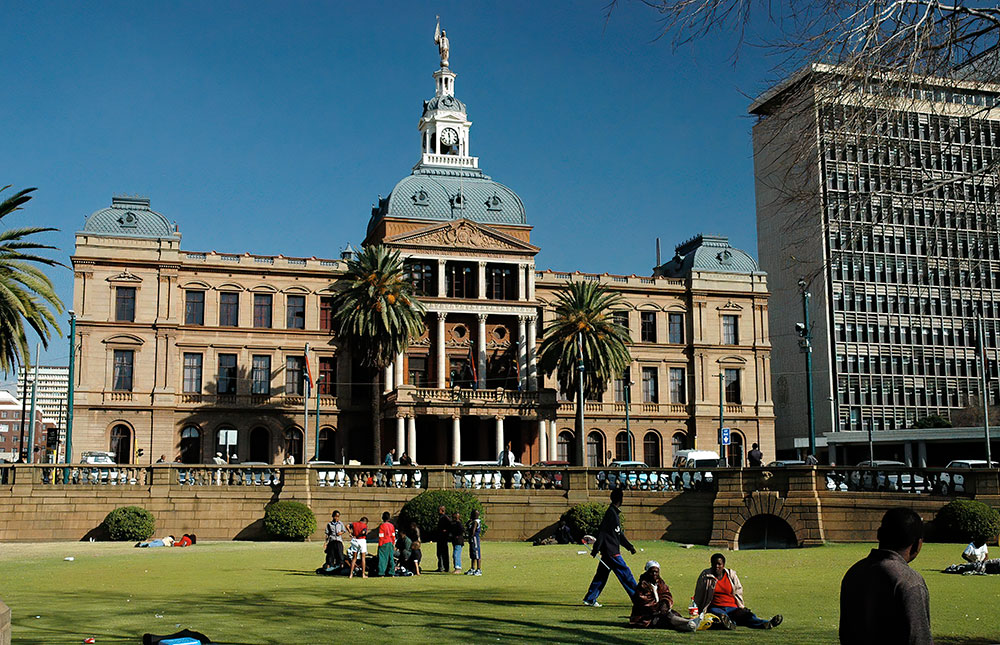
Pretoria
Pilanesberg National Park and private game reserve
During my stay in Pretoria, I visited the Pilanesberg National Park. Here I saw white rhinos and some other species. But due to a recent wildfire, this park was a disappointment in terms of wildlife.
On my last day in South Africa, I went to a private game reserve outside Pretoria. The purpose of this trip was to try to get some photos of lions. I only saw one female lion during the safari. The pictures below were taken in the private game reserve in South Africa, as some species were difficult to spot and to get good photos of in the large national parks. These are not wild animals.
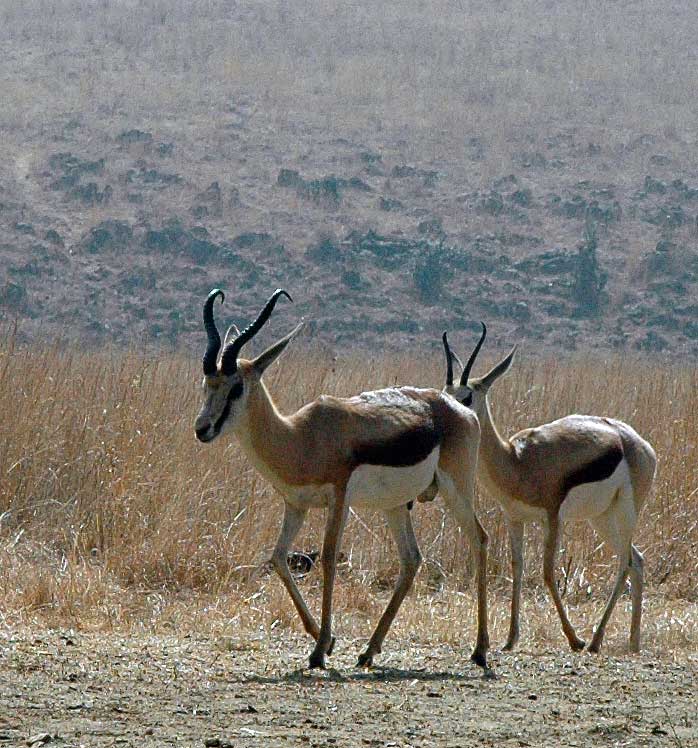
Springbok, private game reserve north of Johannesburg, South Africa
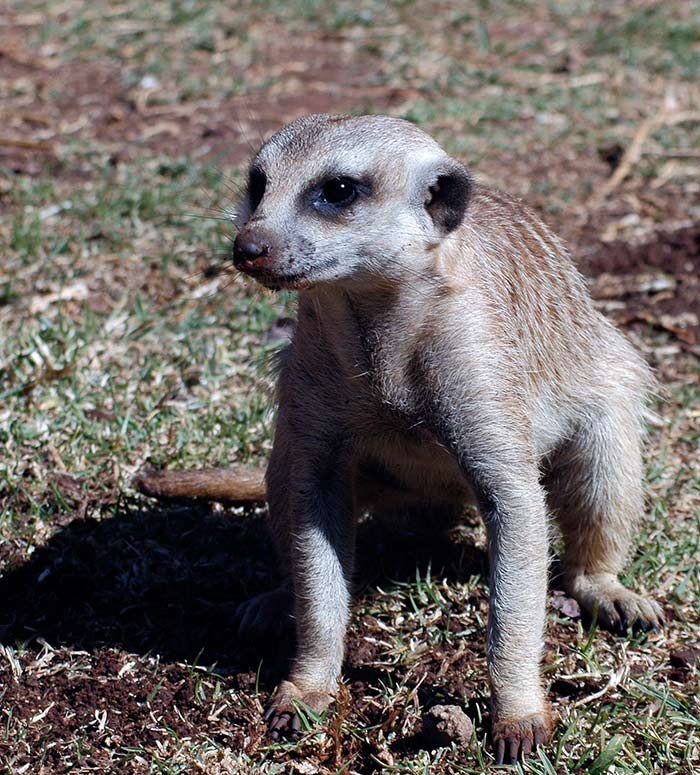
Surricat (captive animal)
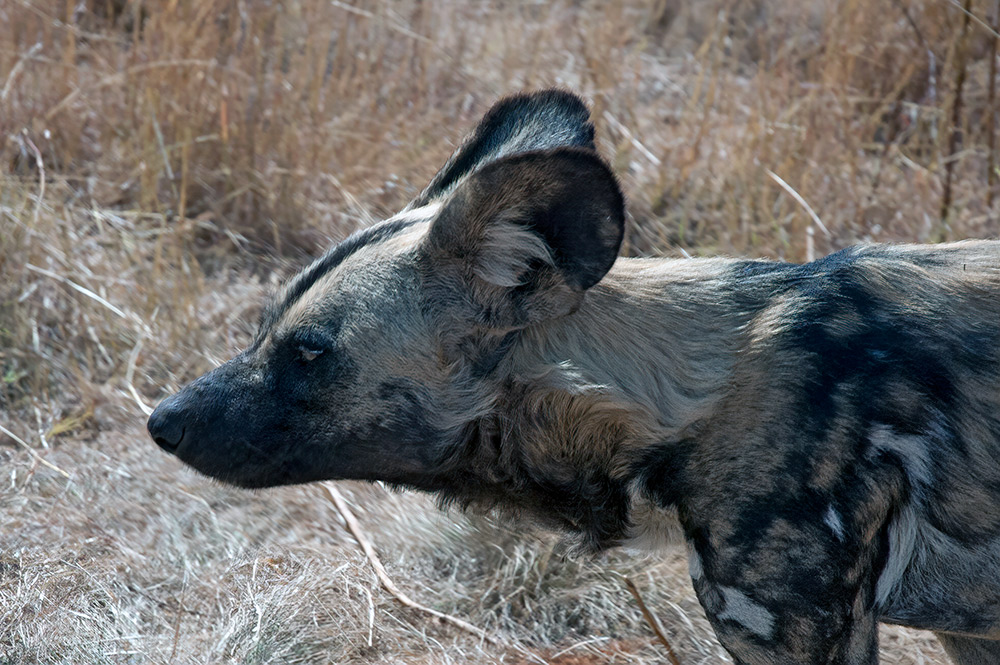
Wild Dog (captive animal)
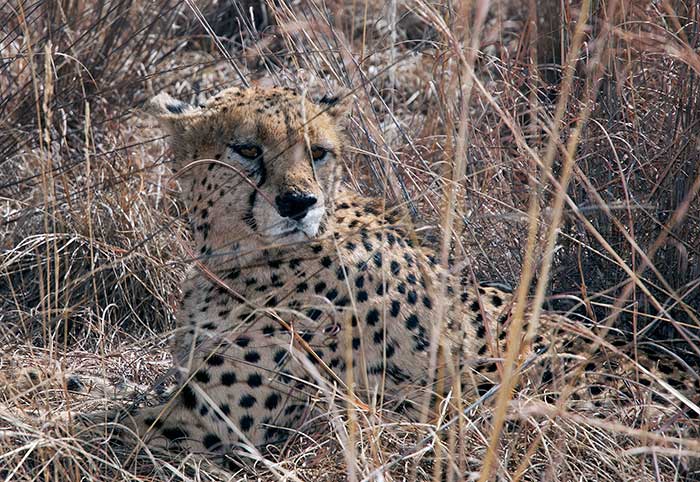
Cheetah (captive animal)